
SPRING 2024
A SINGLE WOMAN’S PERSPECTIVE ON LOVE AND HEALTHY RELATIONSHIPS HOLISTIC HEALTH AND TRIUMPH: KÃRA MCCULLOUGH TEMPLE’S JOURNEY BEYOND MISS USA 2017
ANDRENA’S STORY: Turning infertility and depression into support and a miracle DEFYING THE ODDS: MARLENA’S TRIUMPH IN THE FACE OF BREAST CANCER CHALLENGES

We work hard to make navigating your health care easier. Because having the right health insurance means not having to think about it. Helping you give every moment the attention it deserves.
Focus on what matters to you. We’ll help with the rest. That’s the Benefit of Blue®.
CONTENTS

COVER STORIES
10 Defying the odds: Marlena’s triumph in the face of breast cancer challenges
38 Holistic health and triumph: Kára McCullough Temple's journey beyond Miss USA 2017 38
30 Andrena’s story: Turning infertility and depression into support and a miracle
36 A single woman’s perspective on love and healthy relationships
3 MOTIVATED WOMAN
BlueCross BlueShield of South Carolina is an independent licensee of the Blue Cross Blue Shield Association.
16 Tips to address mental health and substance abuse challenges
20 An in-depth conversation with Public Health Expert Tia Robinson on PrEP
26 Men’s Health Corner: Empowering men: Understanding, preventing and confronting the risk of stroke
44 African-American women disproportionately affected by uterine fibroids
50 From heartache to empowerment: Sommer Clayborne's journey supporting women in prenatal care
54 Navigating disparities: Addressing infant mortality and maternal well-being

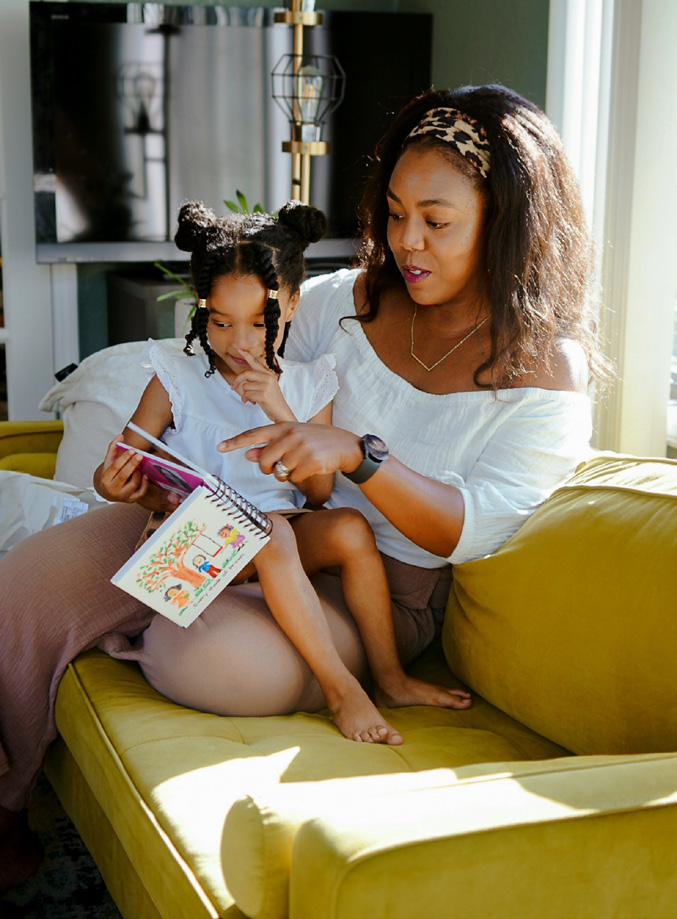
58 Danessa Myricks’ beauty triumphs: Unveiling the Yummy Skin Collection
60 Breaking barriers: Addressing healthcare inequities for women in the U.S

Signature Programs:
Graduate Programs:
62 SCIII: Claflin University and Clinton College
68 Thriving through teamwork: Building your mental wellness dream team


B.S. Speech Pathology
B.S. Biology
B.S. Nuclear Engineering
B.S. Accounting
B.S. Business Administration
B.S. Agribusiness
B.S. Social Work
B.S. Criminal Justice
Ed.D. Educational Administration
M.A. Speech Pathology and Audiology
M.A. Rehabilitation Counseling





M.A. Counselor Education



















































































































4 MOTIVATED WOMAN 5 MOTIVATED WOMAN
LEARN MORE www.scsu.edu 300 COLLEGE STREET NE, ORANGEBURG, SC 29117
CONYERS SC STATE UNIVERSITY PRESIDENT “ “ SC STATE UNIVERSITY Follow SC State University @SCSTATE1896 10 50 74
We are here to make great things happen for our students! COL (RET.) ALEXANDER

MOTIVATION…
Dear Motivated Woman Readers:
Welcome to the Spring 2024 issue of Motivated Woman. In this edition, we delve into critical topics affecting women's health, addressing issues such as infertility, mental health, substance abuse, healthcare inequities and the urgent need to address infant mortality rates. Our aim is to provide you with informative and empowering content that encourages dialogue, enhances your awareness and sparks action.
Additionally, this issue features a dedicated men's health corner focusing on stroke prevention. We recognize the importance of addressing health concerns that affect individuals of all genders and are committed to providing inclusive and comprehensive coverage.
We hope that the articles in this issue spark meaningful conversations, inspire advocacy and contribute to positive change in the realm of healthcare. Thank you for joining us on this journey toward better health and wellness for all.
Warm regards,
 Teesa Brunson, Ed.D. Editor-in-Chief Motivated Woman Magazine
Teesa Brunson, Ed.D. Editor-in-Chief Motivated Woman Magazine
MOTIVATION for women is not just a spark but a flame that ignites resilience, fuels ambition and guides them to rewrite the narrative of possibility, one empowered step at a time.
-Teesa Brunson
PrEP IS FOR WOMEN
What is PrEP?
PrEP stands for Pre-Exposure Prophylaxis. It is a safe and effective daily pill or injectable taken to prevent HIV and can lower your chances of contracting HIV.
Why should women take PrEP?
Women account for 1 in 5 new HIV diagnosis. As of 2019, 18% of newly diagnosed with HIV were women. 227,000 US women are eligible for PrEP but only 10% are taking it.
When does PrEP start working?
Oral PrEP is effective after 20 days for those who have vaginal sex.
Can I take PrEP while pregnant?
Yes. PrEP is safe to take while you are pregnant/ breastfeeding.
Can I take PrEP while on birth control?
Yes. PrEP is safe and does not interfere with your birth control.
Does PrEP protect against other STDs?
No. PrEP does not protect against other STDs. Condoms are the only way to protect against other STDs when sexually active.







How do I pay for PrEP?
PrEP is covered by most insurance companies and Medicaid. Co-pay cards and drug assistance programs for the uninsured are available.
Visit scdhec.gov/PrEP for more Information
7 MOTIVATED WOMAN
CR-013367 05/23 Scan below for PrEP info



Jason Barber
Colletta Brabham-Orr
Phillip Ford
Shavonne Gaskin
Nikki Georgia
Tiffany Goodson

8 MOTIVATED WOMAN
Editor in Chief Teesa Brunson Editorial Manager Delandous Haynes Contributing
MOTIVATED WOMAN SPRING 2024
Writers Tarrah Bonaparte, Michael C., Shawna Dena’, Megan Freeman, Pam Imm, Ayo O., Alexandria Smith, Margaret Williams, Shampale Williams Photography 1083 Photography Studios, Lilly Anne Portraits Motivated Woman, a biannual magazine, serves as a premier resource for women's health issues, including autoimmune disorders, cancer, diabetes, heart disease and obesity. Motivated Woman encourages women to share their inspiring stories of overcoming health challenges to motivate and uplift others facing similar illnesses.
www.motivatedwoman.org info@motivatedwoman.org Motivated Woman Board of Directors
Adrian Scott
Tia Robinson
visit www.motivatedwoman.org to complete our Magazine Readership Survey.
Anika Thomas Please
By Michael C.
DEFYING THE ODDS: MARLENA'S TRIUMPH IN THE FACE OF BREAST CANCER CHALLENGES
The old saying rings true: there is strength in numbers. When facing the most terrifying and difficult news of her life, Marlena Jones-Hawkins of South Carolina quickly learned the power in her wide-ranging support crew.

Marlena, now 45, discovered she had stage two triple-negative breast cancer at age 40. Throughout the tests, scans, tears and love, she emerged as a fighter, survivor, mother, wife and author of a book chronicling her journey in a series of devotionals titled "Grace and the C-Word."
Although the C-Word did not claim her, Marlena's journey was marked by the highest highs and lowest lows of her life. In her book, she recounts her unwavering faith in God, her profound love for family and the incredible support she received from lifelong friends.
"When I went in for my first treatment, I expected it to be just my mom, dad, husband and daughter," Jones-Hawkins recalled. "Only two people could sit with you at a time, but to my surprise, my cousin, who I consider my sister, three friends from Georgia and several of my aunts and uncles were all there. I did not expect the level of support that I received at all.”

eliminate anything that could adversely affect my compromised immune system. And that was just the beginning."
When I walked into the hospital without a hat, in my fatigues and high-heeled boots, Mary, my nurse, said, 'Come to fight today, huh?'
Like many facing breast cancer, she discovered a lump in her breast by accident. Quickly reaching for her phone, she called her mom, who remained calm throughout the entire conversation.
"This lady remained calm, as if I had just told her I stubbed my toe," Marlena recounted. "She stayed with me through it all, doing the typical mom thing by cleaning my house to
The process began with a mammogram and an ultrasound. After detecting the mass, a biopsy was conducted to assess its state, but the results wouldn't be available for five days. Despite the looming burden of distressing news, Marlena traveled to Georgia to assist a friend with an event over the weekend with her husband of five years, George, supporting her. It was on that Monday when she received the diagnosis: breast cancer.
The results indicated triplenegative, signifying the potential conditions contributing to her
diagnosis: negative on hormonal, negative on environmental and negative on hereditary impacts. With no discernible cause, treatment posed a significant challenge.
"I asked so many times," she said. "'How did I get breast cancer?'
I'm the one who preaches to look under your sink, see what's in your chemicals, read what's in your food. Here I am, the poster child with cancer."
Oncologist Steve Madden initiated the treatments and solidified his place in her corner, fighting alongside Marlena. She emphasized that his impact stemmed from both his care for her as a patient and as a friend. However, his treatment plan
I inquired if they had a second bell because I was going to ring this one off the wall. During the last ring, I just lost it. Everything culminated in that moment.
I was trying to rip this thing off the wall. All emotions just flooded in.
10 MOTIVATED WOMAN 11 MOTIVATED WOMAN
Jones-Hawkins sharing her cancer journey at Motivated Woman’s annual health fair
Jones-Hawkins during a photoshoot to celebrate being cancer free
I encourage women to conduct self-checks. Talk to your doctor and advocate for your care. Be mindful and stay encouraged! Surround yourself with family and friends, and don't shut people out. You need them. You absolutely need them. Pray and embrace the power of music.
primarily involved chemotherapy.
“I did not want to go through chemo,” Marlena said. “I asked, ‘What else do you have?’ He explained there was no alternative, emphasizing the necessity of preventing the tumor, which was 2.5 cm from growing.”
ENDURING THE TREATMENTS
She underwent a total of eight treatments, scheduled every other week. Early on, she observed that her Wednesday treatment would leave her fatigued until that Saturday, allowing her to resume work during the “off weeks.”
“Again, I did not anticipate the level of support I received,” she said. “I drove myself, but my daughter offered to take me home. My mom was cleaning my house, and my friends and family were calling, bringing me food and checking in on me."
During her second treatment, Marlena received a warning that she would lose her hair, which she considered a significant part

this treatment that a friend, who had faced colon cancer, suggested she dress as if she were going somewhere else instead of a chemo session.
"I began wearing my favorite dresses, and my daughter styled my hair," she reminisced. "It became a routine for my nurses to anticipate what I would wear each day."
Marlena began experiencing headaches that she couldn't identify. Although the doctor prescribed medications and provided advice, nothing alleviated the pain. She could feel her hair leaving her scalp, and with a stroke of her husband's hand through her hair, it came out in clumps.
cut my hair, but the headache persisted. The next morning, I told my husband, 'Just shave it off.' With the first stroke of that trimmer across my head, I felt the pain subside. I informed my doctor that the headache seemed to be the pain of my hair leaving my head, a sensation they mentioned no one had ever described to them before."
Marlena's hair loss profoundly affected her perspective. The emotional toll of losing not just her hair but also her identity was the most challenging aspect for her, she explained.

12 MOTIVATED WOMAN 13 MOTIVATED WOMAN
Marlena, and her husband, George, following one of her treatments
Jones-Hawkins chronicles her journey in a series of devotionals titled "Grace and the C-Word."
I asked so many times, ‘How did I get breast cancer?’ I'm the one who preaches to look under your sink, see what's in your chemicals, read what's in your food. Here I am, the poster child with cancer.

COMING TO FIGHT
Marlena made her first public appearance without hair.
"This time, as I headed to my treatment session, I'm angry," she said. "I wore camel pants and a shirt that said, ‘The only man that can use me is Jesus.’ My daughter took a pic and sent it to my friend, who then intentionally shaved her head. She called me and said, ‘You wear that bald head, Lena! You have to do it for you.'"
“When I walked into the hospital without a hat, in my fatigues and high-heeled boots, Mary, my nurse, said, ‘Come to fight today, huh?’”
These words became a theme in Marlena's battle with cancer. Shirts featuring the Wonder Woman logo with a pink ribbon in the "W" were created for family and friends, and an Instagram account named “WonderWomenFight” was established.
Marlena’s support group expanded significantly over the weeks, to the extent that the hospital provided her with a different room for treatments
to accommodate more visitors, sometimes reaching 20 or more. The assistance and camaraderie of family and friends extended into other patient rooms.
"If I had to go through that alone, I wouldn't have emotionally held up," Marlena said. "Family members went to sit with other people, laughing and drawing them into our conversations. I suppose my family essentially became volunteers. They were just everywhere."
FINAL TREATMENT
Marlena completed her final treatment on October 16, 2019.
Upon completion, she had the opportunity to ring the bell, symbolizing the end of her battle and her victory.
"I inquired if they had a second bell because I was going to ring this one off the wall," she said.
"During the last ring, I just lost it. Everything culminated in that moment. I was trying to rip this thing off the wall. All emotions just flooded in. When someone hugs you, that’s it."
When Marlena returned for the final removal of the mass, she received great news. The surgeon explained that they were unable to locate it; it had completely vanished.
WORDS TO LIVE BY
Marlena has authored "Grace and the C-Word," a collection of devotionals written from her perspective, aiming to provide people with peace and remind them to prioritize family and faith in everything they do.
"I encourage women to conduct self-checks," Marlena said. "Talk to your doctor and advocate for your care. Be mindful and stay encouraged! Surround yourself with family and friends, and don't shut people out. You need them. You absolutely need them. Pray and embrace the power of music.”
"Hang in there. It's tough, but we're built to handle this. Lean on His words and your family."

As women, we have a tendency to put our own needs last. But there are times that can jeopardize your health and your future. That’s why NoDrama.org offers eight birth control options, all free or low-cost. With virtual appointments, live chat and prescriptions by mail, it’s never been easier to give your life the priority it deserves.
15 MOTIVATED WOMAN 14 MOTIVATED WOMAN LOVE Y O U R S E L F FIRST. NODRAMA.ORG LEARN MORE AT
Marlena Jones-Hawkins
MENTAL HEALTH AND SUBSTANCE ABUSE CHALLENGES
By Pam Imm

Despite increased discussions about mental health and substance misuse, there is still a long road ahead. Avoid using stigmatizing labels like ‘crazy’ or 'drug addict.'
A long-time friend who recently relocated to South Carolina reached out to me, curious about the growing emphasis on mental health in the state and within the school system. She shared that a counselor at her daughter's school had recommended counseling for symptoms of depression. Learning that these services were available during the school day, she expressed gratitude and observed positive changes in her daughter after just a few weeks. Later in our conversation, I inquired about her older brother, aware of his past struggles with alcohol misuse. She hesitated before revealing that he had "fallen off the wagon" during the holidays, attributing it to the overpowering nature of temptation. A significant portion of our discussion revolved around strategies for interacting and supporting her brother and daughter.
With over 30 years of experience working in substance use and mental health, I value the trust others place in me to provide guidance on handling delicate situations. Life often subjects us to periods of elevated stress, uncertainty and a persistent desire for "normalcy" that propels us forward. Yet, as we navigate the aftermath of the pandemic, it becomes evident that numerous factors in our communities have shifted. We are now more attuned to underlying needs and conditions, such as health disparities, families experiencing homelessness and job loss - all of which can significantly impact our well-being and mental health.
Clear distinctions exist between mental health challenges and mental health disorders, including substance use disorder. Mental health challenges, similar to what my friend's daughter is going through,
are not unusual, particularly during periods of change and stress. Individuals facing severe and persistent symptoms, such as my friend's brother diagnosed with alcohol use disorder, require treatment and support. In our collective efforts to enhance personal well-being, assist those grappling with challenges and foster healthy and safe families and communities, consider the following ideas.
FOR EVERYONE:
1. Recognize that stigma is our primary adversary. Despite increased discussions about mental health and substance misuse, there is still a long road ahead. Avoid using stigmatizing labels like "crazy" or "drug addict." Such terms do nothing to boost a person's confidence or motivation to progress positively. Remember, a person is not synonymous with their disease. Consider using firstperson language or descriptors like "person with substance use disorder or mental health disorder," "unsheltered or unhoused person," or "those who are justice-involved."
2. Set a positive example for others. Don't treat discussions about mental health or substance use as taboo, strange or difficult.
3. Seek guidance if you personally need assistance with an issue. Begin with your physician, as they are familiar with helpful
referral sources and may conduct relevant tests, such as blood work, to rule out physical conditions (e.g., endocrine disorders) that can mimic mental health conditions (e.g., depression, anxiety).
Prioritize self-care, especially if you work in the helping profession or frequently interact with the
public. Strive for balance in life, and consider activities such as prayer or meditation, brisk walking and maintaining social connections, which many find beneficial.
FOR PARENTS:
1. Emphasize the importance of being a positive role model.

Engage in frequent conversations with children about family expectations for their behavior. Clearly communicate the consequences of certain actions, making it more likely for youth to resist the temptation of alcohol or drugs.
16 MOTIVATED WOMAN 17 MOTIVATED WOMAN
TIPS TO ADDRESS
Taking the initiative to seek help for mental health or alcohol misuse is a crucial and empowering step toward overall well-being. Just as we prioritize our physical health, addressing these challenges is essential for leading a fulfilling life.
2. Engage in frequent conversations with children about family expectations for their behavior. Clearly communicate the consequences of certain actions, making it more likely for youth to resist the temptation of alcohol or drugs. Offer guidance on handling peer pressure, such as expressing the potential consequences imposed by parents (e.g., "my parents will take my car keys away if I drink").
3. Cultivate a loving and trusting relationship with your children from an early age. Demonstrate your affection and remember to acknowledge and praise their efforts, not just their achievements (e.g., good grades, athletic accomplishments, etc.).
4. Stay vigilant for changes in their behavior, mood and attitude. Seek assistance and explore referrals, support groups and community resources when needed.
TYPES OF ASSISTANCE
There are various types of professionals available to offer assistance. Seek providers who are licensed in their respective fields or in the process of
obtaining licensure. Licensed professionals typically have completed coursework, gained practical experience with clients, undergone supervision and demonstrated mastery through their degree or licensing. Psychiatrists are medical doctors with a specialty in psychiatry. They diagnose, treat and provide medication for those with major mental illnesses (e.g., schizophrenia, etc.). Psychologists have a Ph.D. or Psy.D. and similarly have significant coursework and practical experience seeing different types of clients. Many provide comprehensive psychological evaluations for diagnosis as well as clinical interventions and treatments for many disorders. In some settings, the terms counselor or therapist are overly broad and do not always suggest someone with a degree or license. In a clinical setting, the term counselor usually indicates a licensed professional counselor who can provide general counseling techniques to address symptoms. Depending on insurance, sessions with these licensed professionals are usually covered.
Taking the initiative to seek help for mental health or alcohol
misuse is a crucial and empowering step toward overall well-being. Just as we prioritize our physical health, addressing these challenges is essential for leading a fulfilling life. Seeking professional support provides a safe space to explore and navigate the challenges that may be impacting one's mental and emotional state. It is a sign of strength, not weakness, to acknowledge when additional assistance is needed.

Pam Imm, Ph.D., earned her doctorate in clinical and community psychology from the University of South Carolina. With extensive experience in program development, program evaluation and applied research, she has been a dedicated affiliate of the Lexington Richland Alcohol and Drug Abuse Council for over 30 years. Dr. Imm also provides consultation services to numerous state and national organizations, aiding them in incorporating evidence-based concepts into their initiatives.









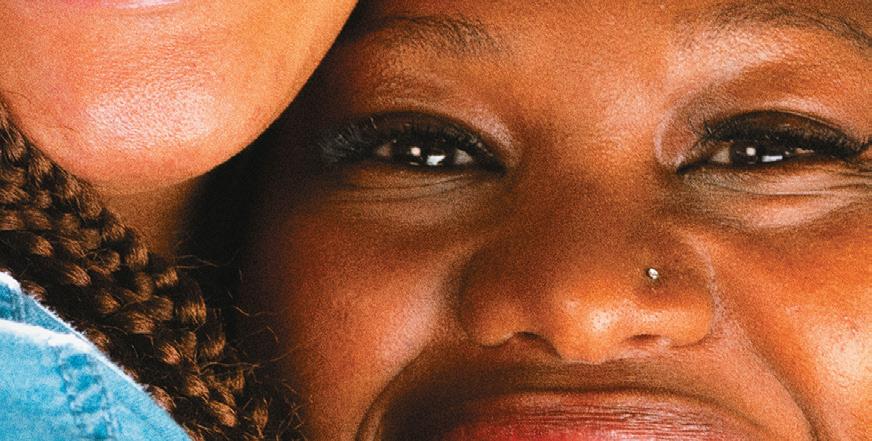






Adopt a teen. You can’t imagine the reward.




18 MOTIVATED WOMAN
Who adopted who?
AN IN-DEPTH CONVERSATION WITH PUBLIC HEALTH EXPERT TIA
ROBINSON ON PrEP
Motivated Woman conducted an exclusive one-on-one interview with Tia Robinson, a seasoned public health professional, discussing the effectiveness of PrEP (Pre-Exposure Prophylaxis), a medication designed to prevent Human Immunodeficiency Virus (HIV). In gaining insights from Robinson, Motivated Woman aims to empower individuals with valuable information about PrEP, fostering awareness and understanding in the ongoing efforts to combat HIV.

MW: What is PrEP?
TR: PrEP stands for pre-exposure prophylaxis. PrEP is a strategy to prevent HIV infection. If taken correctly, PrEP can prevent someone from acquiring HIV.
MW: How exactly does PrEP prevent HIV?
TR: If someone taking PrEP is exposed to the HIV virus through sex or drug use, the medication will prevent the HIV from infecting the person. Think of it like a medical raincoat or a shield. PrEP contains two antiretroviral drugs (emtricitabine and a form of tenofovir) and these drugs work to prevent the conversion of HIV RNA into DNA. PrEP prevents the
If your circumstances change, you can discontinue PrEP, but you should always consult your physician before stopping PrEP. If you are not taking PrEP and you are potentially exposed to HIV through non-consensual sex, sharing IV drug equipment or sexual intercourse with a partner of unknown HIV status, you should ask your provider about nPEP.
HIV virus from replicating its genes.
MW: How effective is PrEP?
TR: PrEP is highly effective, up to 99% if taken as prescribed.
MW: How often should someone take PrEP?
TR: If your circumstances change, you can discontinue PrEP, but you should always consult your physician before stopping PrEP. If you are not taking PrEP and you are potentially exposed to HIV through nonconsensual sex, sharing IV drug equipment or sexual intercourse with a partner of unknown HIV status, you should ask your provider about nPEP. Nonoccupational postexposure prophylaxis or nPEP should be taken within 72 hours of potential exposure to HIV.
MW: How long does it take for PrEP to start working?
TR: PrEP’s maximum protection is

achieved at various doses depending on the body location. For anal sex (anal tissue), the maximum protection is reached at seven daily doses, 21 daily doses for vaginal or frontal sex (vaginal tissues) and 21 daily doses for protective levels in the blood.
MW: What makes someone a good candidate for PrEP?
TR: PrEP is beneficial for anyone who has had a sexual partner with HIV, especially if the partner has an unknown or detectable viral
The oral medication requires kidney and cholesterol monitoring, and the injectable does not. Although the injectable does not require kidney and cholesterol monitoring, all PrEP medications have been proven to be highly effective at preventing HIV.
21 MOTIVATED WOMAN 20 MOTIVATED WOMAN
Tia Robinson, DNP, APRN, WHNP-BC

load, has not consistently used a condom or has been diagnosed with a sexually transmitted infection (STI) within the past six months. PrEP is also an option for someone who wants to take more control over their sexual health.
MW: Are there different types of PrEP? If so, please describe the different types?
TR: Yes, there are FDA-approved oral and injectable options available for PrEP. Truvada and Descovy are the two pill options and Apretude is the injection option for PrEP.
MW: Are there different risks when taking the pills as opposed to shots?
With any medication, there may be risk, and it is dependent on each patient’s current health condition. It's important to take the medication as prescribed and keep follow-up laboratory appointments.
TR: The oral medication requires kidney and cholesterol monitoring, and the injectable does not. Although the injectable does not require kidney and cholesterol monitoring, all PrEP medications have been proven to be highly effective at preventing HIV.
Overall, the risks of side effects and complications are very low. PrEP is
follow-up laboratory appointments.
MW: Is weight loss or weight gain a common occurrence while on PrEP?
TR: Studies have shown that individuals on Descovy may gain weight compared to weight loss with Truvada. The amount of weight change is generally small and only a few pounds.
TR: Yes. As long as the adolescent weighs more than 77 pounds or 35 kilograms, it is safe. Some states require consent with minors.
MW: What is the typical cost associated with PrEP?
considered very safe and effective.
MW: What are the side effects of PrEP?
TR: PrEP is safe, but some individuals may experience diarrhea, nausea, headache, fatigue and stomach pain. However, these side effects typically go away with time. The oral medications require kidney monitoring.
MW: Are there any long-term risks to taking PrEP?
TR: With any medication, there may be risk, and it is dependent on each patient’s current health condition. It's important to take the medication as prescribed and keep
MW: Can PrEP assist a woman with safely conceiving if her partner is HIV-positive?
TR: PrEP is safe for pregnant women and has no effects on the unborn child. The patient should inform her obstetrician if she is taking PrEP.
MW: Can a woman take PrEP during pregnancy or while breastfeeding?
TR: Yes. Although PrEP passes into breast milk in small amounts, it is unlikely to pass a side effect to the baby.
MW: Is it advisable for individuals to continue using condoms alongside taking PrEP?
TR: Yes. Condoms are the only way to prevent the transmission of sexually transmitted infections such as syphilis, gonorrhea and chlamydia.
MW: Can adolescents take PrEP?
TR: The cost of the medication is dependent on insurance coverage. There is a generic formulation available for Truvada that can be purchased for less than $20 for a 30-day supply.
MW: Is PrEP typically covered by most insurance plans?
TR: Yes, including Medicaid. If you do not have insurance, there are programs to help cover the cost of testing and medications.
MW: Can individuals obtain PrEP medication from a primary healthcare provider, or is it necessary to see a specialized doctor?
TR: It depends. If one’s primary care provider offers PrEP, then yes. If not, individuals can visit www. scdhec.gov/PrEP to find a local provider. Some individuals can access PrEP at no cost through online healthcare providers.
MW: When taking PrEP, how often should someone be tested for HIV and other STIs?
MW: What are some other options individuals can use to lower their risk of HIV infection?
TR: Individuals can always use condoms. If individuals do not want to take PrEP every day, there is an on-demand or event-driven option available, “2-1-1" dosing. Individuals should consult with their provider if this is something they are interested in taking. Also, nPEP (non-occupational postexposure prophylaxis) can be taken within 72 hours after a possible HIV exposure but should only be used in emergency situations.
Tia Robinson, DNP, APRN, WHNP-BC, has dedicated nearly a decade to public health, contributing her expertise to the South Carolina Department of Health and Environmental Control. In her current role as the PrEP program manager, Robinson spearheads comprehensive oversight of PrEP initiatives across South Carolina.
TR: PrEP clients should be tested for HIV and STIs routinely. Oral PrEP clients are recommended to get tested every three months, while clients receiving the injectable are recommended to get tested every two months.
22 MOTIVATED WOMAN 23 MOTIVATED WOMAN
HEALTHY DISH
This issue’s healthy dish is from The Food Academy, a full-service hospitality company with 25 years of culinary experience. The Food Academy offers exceptional experiences such as catering, family meal planning and cooking classes. To learn more about the academy, visit thefoodacademyllc.com.
Car’Lina Collards
Yield: 4 servings
Prep time: 10 minutes
Cook time: 10-40 minutes
INGREDIENTS:
• 6 cups frozen collards or 4 pounds fresh collards
• 2 tbsp. agave syrup
• 1 cup chopped onion
• 1 cup chopped bell pepper
• 2 tbsp. minced garlic
• 1 small jalapeno, chopped (optional)
• 3 tbsp. apple cider vinegar
• ½ cup low sodium Worcestershire sauce
• 2 tbsp. smoked paprika
• 2 tsp. pepper
• 1 tbsp. TFA’s low-sodium House Seasoning Blend
• 2 cups sodium-free vegetable stock


DIRECTIONS:
• Mise en place (gather all ingredients), measure, chop and mince.
• Sauté onion and pepper (& jalapeno) on medium heat in a non-stick pot until onion is translucent.
• Add collards and garlic, mix in with onions and peppers. Sauté for one additional minute.
• Add stock, syrup, seasonings, vinegar, and Worcestershire sauce to the pot. Cook on medium high heat for 5 minutes.
• Reduce heat, cook on medium low heat (10 minutes for frozen collards, 40 minutes for fresh collards) or until collards are tender to liking. Remove from heat, serve hot.
Note: For extremely tender collards, let cook in a crock pot for up to 4 hours on low heat.)


25 MOTIVATED WOMAN 24 MOTIVATED WOMAN SouthStateBank.com • Member FDIC Let’s Start Banking Forward Together. We are proud to serve the Midlands and are committed to supporting this community and those who strive to make it a better place for all of us. 803.771.2265
Car’Lina Collards
Jessica and Isiah Carswell, owners of The Food Academy
EMPOWERING MEN:
Understanding, preventing and confronting the risk
Motivated Woman's editorin-chief, Teesa Brunson, endured the loss of her father in 2021 due to complications stemming from a stroke. Black men in the United States face a 50% higher risk of stroke compared to their white counterparts and are 70% more likely to succumb to its consequences, as reported by the Office of Minority Health. Motivated Woman is driven to raise greater awareness about this health concern. This article is dedicated in loving memory of Brunson's father, Wayne Johnson.
Stroke is a severe global health concern, ranking as the fifth leading cause of death in men, according to the American Stroke Association. The World Stroke Organization underscores its significance as the second most common cause of death worldwide and the third leading cause of combined disability and death. Recognizing the causes, symptoms and signs of stroke is crucial as they often lead to life-altering consequences.
A stroke, commonly referred to as a "brain attack," occurs when the blood supply to the brain is compromised. This disruption can result from a blood vessel rupture (hemorrhagic stroke) or a blood vessel blockage (ischemic stroke). Immediate action is essential, as the impact of a stroke can be
of
stroke
serious and life changing.
Recognizable warning signs include sudden numbness or weakness, particularly on one side of the body, confusion, difficulty in speaking, blurred or double vision, severe headaches, dizziness and loss of balance. Identifying these symptoms promptly is crucial for
Treatment options may include clot-busting drugs, mechanical thrombectomy, surgery for hemorrhagic stroke and rehabilitation to regain lost abilities.

Motivated Woman’s editor-in-chief, Teesa Brunson, with her late father, Wayne Johnson.

Recognizable warning signs include sudden numbness or weakness, particularly on one side of the body, confusion, difficulty in speaking, blurred or double vision, severe headaches, dizziness and loss of balance.
26 MOTIVATED WOMAN 27 MOTIVATED WOMAN
MEN’S HEALTH CORNER
Black men in the United States face a 50% higher risk of stroke compared to their white counterparts and are 70% more likely to succumb to its consequences.
- Office of Minority Health
effective intervention.
To reduce the risk of stroke, consider the following tips:
1. Manage hypertension: Effectively managing high blood pressure can decrease the risk of stroke by up to 40%.
2. Quit smoking: Smoking doubles the risk of stroke, making it vital to stop this habit.
3. Control obesity: Maintaining a healthy weight significantly reduces the risk of stroke.
4. Increase physical activity: Regular physical activity lowers the risk of stroke; adults should aim for 150 minutes weekly, while children and teenagers need one hour daily.
5. Limit alcohol consumption: Heavy drinking is associated with an increase d risk of stroke; moderation is key.
6. Manage medication: Follow healthcare provider recommendations for medication management without interruption. In the event of a stroke, immediate medical attention is crucial. Treatment options

may include clot-busting drugs, mechanical thrombectomy, surgery for hemorrhagic stroke and rehabilitation to regain lost abilities.
Understanding and implementing proactive measures significantly diminish the risk of stroke. Prevention involves recognizing warning signs, managing risk factors and adopting a healthy lifestyle.



Seeking early medical assistance is paramount, emphasizing the importance of immediate action is essential to survival rates. Men can safeguard themselves from the devastating effects of a stroke and embrace a longer, healthier life by taking charge of their health.

28 MOTIVATED WOMAN
WILLIAMS SOUTH CAROLINA CIVIL RIGHTS MUSEUM Palmetto State’s First & Only Civil Rights History Museum
The Pursuit for Social Justice & Racial Accord Never Ends at the CECIL
Reverend Joseph A. DeLaine, a courageous, fearless, faithful man of integrity, was the impetus behind the Clarendon County Briggs petitioners. After this case combined with four others led to Brown v. Board of Education, he frequently became a target and received death threats. In 2004, President George Bush awarded DeLaine, Briggs and Pearson, the Congressional Gold Medal for their efforts which overthrew the 1896 Plessy v. Ferguson and ‘separate but equal’ doctrine and legal segregation; all this years and months before the better known MLK, Rosa Parks, and Montgomery Bus Boycott. This history and legend rightfully places South Carolina as the birthplace of the Civil Rights Movement.
Now Accepting On-Site Appointments
Telephone: 803-531-1662/803-347-8001 for additional information. Orangeburg, South Carolina
ANDRENA’S STORY:
TURNING INFERTILITY AND DEPRESSION INTO SUPPORT AND A MIRACLE
By Michael C.
The saying, "When life gives you lemons," has become a cliché for a reason. It encapsulates the choice between taking the high road or the low, deciding whether to succumb to suffering or transform adversity into opportunity. Andrena King embodies the essence of this adage. Despite facing the challenges of infertility and enduring moments of weakness on her journey to motherhood, Andrena turned her suffering into something meaningful. Out of her struggles and losses, she found a way to provide the support that her community desperately needed - culminating in the birth of her "miracle," Christian.
The 46-year-old native of South Carolina and her husband, Christopher, tied the knot in 2013. After two years into their marriage, the couple decided it was time to expand their family. Seeking guidance, they consulted their family doctor, initiated the typical procedures and attempted to conceive naturally for the initial year. Despite their hopeful anticipation each month, the outcome remained consistent –pregnancy had not been achieved yet.
The subsequent course of action involved undergoing tests to identify the underlying cause of their difficulty in conceiving. The objective was to pinpoint the factors hindering pregnancy and devise a plan to fulfill their dream of having a child.
"They were conducting a test to assess the condition and functionality of my fallopian tubes,”
Remember to advocate for your needs and know it's okay to seek a second opinion. Our journey wouldn't have been possible without God and our family.

Andrena said. “I distinctly remember the moment when the doctor and nurse huddled together, conversing in hushed tones while gesturing toward the screen. Naturally, I was clueless about what I was observing."
According to her doctor, one of Andrena’s fallopian tubes was obstructed, which would require additional testing. The subsequent course of action would be overseen by a fertility specialist, ultimately leading to a decision regarding in vitro fertilization (IVF).
“I recall leaving there in tears because I didn't

31 MOTIVATED WOMAN 30 MOTIVATED WOMAN
The Kings with miracle baby, Christian
Andrena with her husband, Christopher
Seeing other women in the support group become pregnant was emotionally challenging for me. While offering support to others, I couldn't help but wonder, ‘When will it be our turn?’
Additionally, witnessing various family members experience pregnancies and welcome babies caused me to get very emotional at times.
sense much empathy regarding what we were going through,” she said. “I felt as if my medical team were just going through the motions, and we were just another statistical part of their daily routine – which was a hard feeling to process.
While delving into the medical complexities of IVF, Andrena simultaneously sought out support groups to tap into collective experiences. Unfortunately, her local area lacked such groups, but she discovered a national support network, the National Infertility Awareness Association (NIAA).
"I reached out to a family member who was also experiencing infertility," Andrena shared. "We discussed the possibilities of cofounding a support group in our area, and she enthusiastically embraced the idea. Together, we completed the necessary paperwork to set the process in motion."
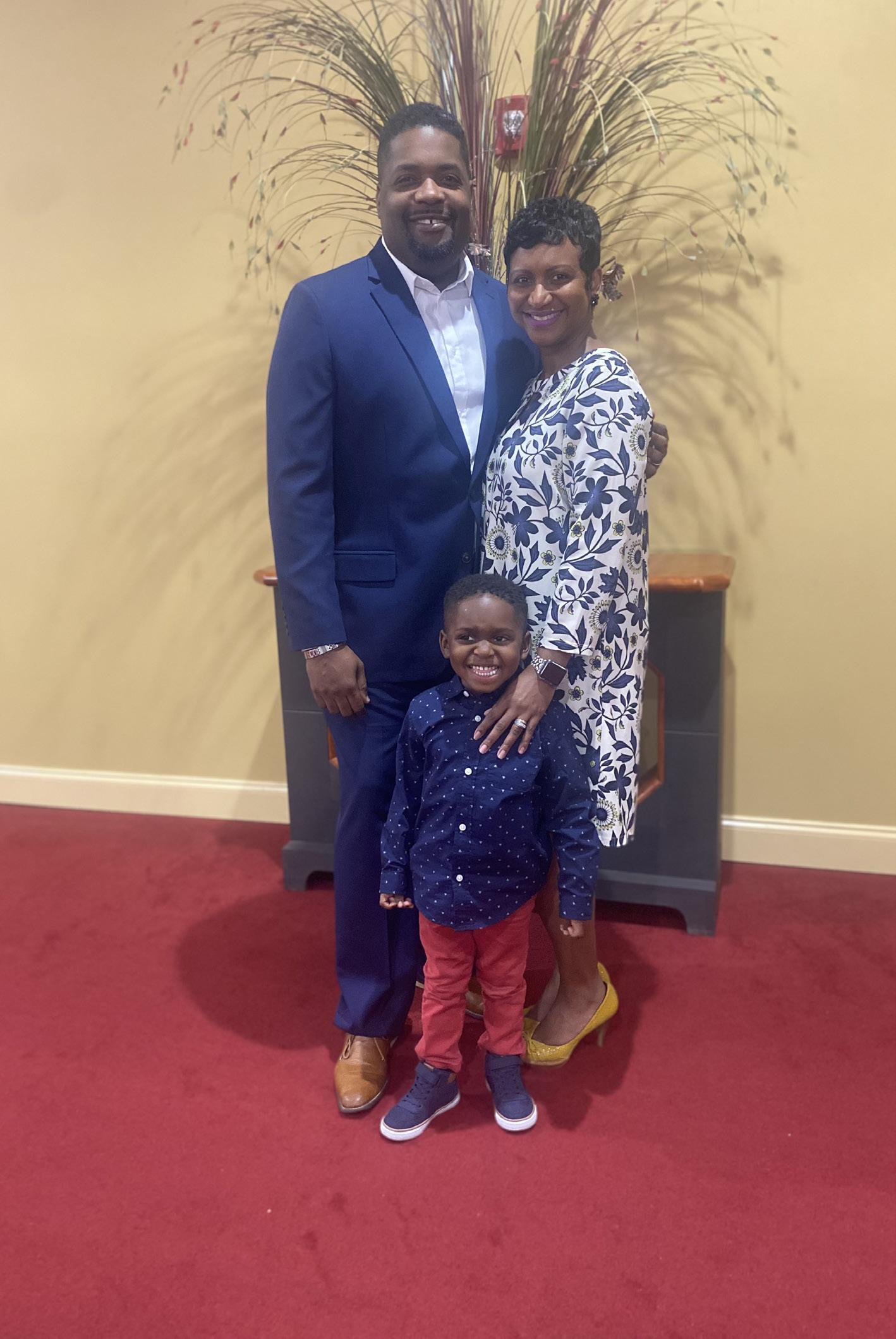
Andrena established a support group for women grappling with infertility. The group held regular monthly meetings with occasional sessions involving husbands. Through these interactions, Andrena identified a common challenge among the women— the complexities of dealing with insurance coverage.
I recall leaving there in tears because I didn't sense much empathy regarding what we were going through. I felt as if my medical team were just going through the motions, and we were just another statistical part of their daily routine – which was a hard feeling to process.
not mandate insurance coverage for infertility. Taking her advocacy to the public, Andrena conducted interviews with various news outlets and actively participated in public events to shed light on the issue of inadequate insurance coverage for infertility. Recognizing her dedication, Andrena earned a grant that enabled her to travel to Washington D.C., where she joined forces with her national group to advocate for individuals challenged by infertility.

“Given infertility is a medical diagnosis, I assumed insurance companies would automatically provide coverage, but this wasn’t always the case. We began to research why some companies would not provide coverage.”
As she continued her personal research on IVF and navigated her own journey, Andrena also engaged with South Carolina legislative representatives. Her efforts revealed that unlike some other states, South Carolina does
Despite the expansion of the support group, the Kings remained steadfast in their dream of expanding their family. They decided to get a second opinion before committing to IVF and sought out a new doctor. Unlike the initial procedure, the new doctor, unable to clearly identify the blockage, proposed an alternative procedure for a more accurate diagnosis. This led to the discovery of a cyst on Andrena's
fallopian tube. With determination and a newfound sense of hope, Andrena underwent surgery to remove the cyst, marking the beginning of the Kings' renewed efforts to conceive.
“Seeing other women in the support group become pregnant was emotionally challenging for me. While offering support to others, I couldn't help but wonder, 'When will it be our turn?'
Additionally, witnessing various family members experience pregnancies and welcome babies caused me to get very emotional at times.”
Coupled with the ongoing stress of not conceiving and the financial strain resulting from the absence of insurance coverage, Andrena found herself dealing with depression.
After a one-year break,
32 MOTIVATED WOMAN 33 MOTIVATED WOMAN
The Kings with their son, Christian Christian King
the Kings decided to try again, embarking on the IVF process with the support and encouragement of their doctor. With prayers and support from their church community, they started the process.
"I was 40 at the time. I remember the doctor coming in to share that we had 40 for 40," Andrena said. "I looked at him in disbelief. The doctor said it was unbelievable that they were able to retrieve 40 eggs."
Out of the 40 eggs, 18 were successfully fertilized. Among those 18, nine embryos were able to be processed for potential implantation into Andrena.
Nevertheless, the couple made the decision to proceed with just one egg. In a heartwarming turn of events, Andrena received an early birthday gift - the day before her birthday, the Kings learned that they would be parents. Nine
months later, they welcomed their miracle baby, Christian.
Andrena wants women to understand the importance of advocating for their fertility needs.
"Remember to advocate for your needs and know it's okay to seek a second opinion," she said. "Our journey wouldn't have been possible without God and our family.”


34 MOTIVATED WOMAN
A SINGLE WOMAN'S PERSPECTIVE ON LOVE AND HEALTHY RELATIONSHIPS
Establishing healthy relationships can be particularly challenging. Singles navigate a dynamic landscape filled with both obstacles and opportunities. The journey to finding love and fostering a healthy relationship is a unique and personal experience, shaped by societal expectations, evolving norms and individual aspirations. In this exploration of the dating world, Motivated Woman interviewed Michelle McKenzie to provide insight from a single woman's perspective on what she seeks in a healthy relationship. Join us on a candid exploration of the tribulations Michelle has encountered in the pursuit of love in today's intricate dating scene. Stay tuned as Motivated Woman will highlight the challenges faced from a single man's perspective in the next issue.
MW: What are your expectations in a relationship?
MM: My expectations in a relationship include honesty, transparency, respect, consistency, verbal as well as physical affection and reciprocal love.
MW: What does a healthy relationship look like to you?
MM: I would describe a healthy relationship as one where we both are striving to have a strong prayerful relationship with Jesus. One where we feel comfortable expressing all feelings, thoughts and concerns. One where we are both open to compromise and there is reciprocal love, affection and consideration for each other’s schedules, passions, families, children and feelings.
MW: How would you want your partner to show you that they value you?
MM: My partner needs to acknowledge me when making

decisions concerning us as partners as well as individually. My partner can show me that they value me by being loyal and respectful of my feelings, thoughts and concerns. They can show value to me by showing appreciation whether it’s verbally or through a physical action.
Although I have no major mental health issues currently, I do have general anxiety from time to time.
MW: What aspect of maintaining a healthy relationship has presented the most significant challenge for you?
MW: What are your thoughts on sharing details about your mental health with your partner?
MM: Being able to discuss my mental health with a partner is important. However, if I’m being honest, I must say that I do have apprehensions. My apprehensions stem from my partner potentially using a weak moment against me or not being able to provide the type of support that I may require.
message; therefore, we can address discrepancies within the moment.
MW: What qualities or actions are essential for you to develop trust in a partner?
MM: I need consistency, honesty and transparency. I need for my partner to walk through life with an intention of striving to operate with their best foot forward with how they treat me and others.
MW: What are your reflections on therapy or counseling and how have they shaped your experiences?
MM: I have never participated in therapy or counseling; however, I do feel that I would benefit from it due to current trust issues. I also feel that therapy can benefit a couple who has intentions of improving or saving their relationship if both parties are willing to realize that change is needed and are willing to implement the change needed.
MM: The challenging part about trying to develop and maintain a relationship is being able to verbally express thoughts and ideas as well as understanding the intent of what is being said at the time of a discussion. I do feel that oftentimes in the past, I wasn’t listening to the intent of the message. Instead, I was waiting to respond. Currently, I am more mindful to listen, ask questions about the intent of the person talking, as well as address how I am feeling receiving the
The challenging part about trying to develop and maintain a relationship is being able to verbally express thoughts and ideas as well as understanding the intent of what is being said at the time of a discussion. I do feel that oftentimes in the past, I wasn’t listening to the intent of the message.
MW: How do you believe couples should effectively handle their finances to maintain a healthy relationship?
MM: I think finances should be agreed upon by that couple. There is no set rule on how finances should be managed due to each person having their own skill set or lack thereof regarding finances.
MW: Are you open to incorporating small, sustainable changes for the sake of fostering a healthy relationship?
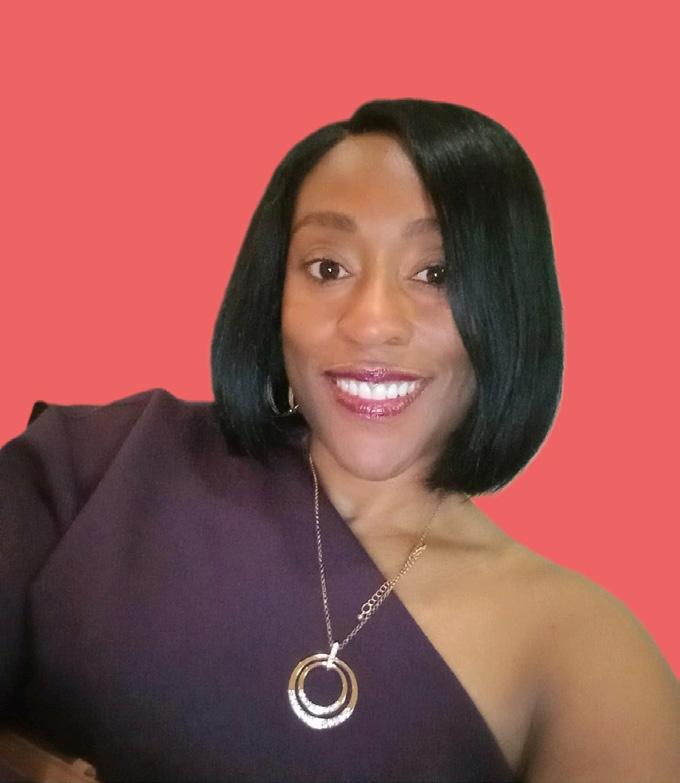
Michelle McKenzie is currently an assessment specialist with the Department of Disabilities and Special Needs. She holds a bachelor's degree in psychology from the University of South Carolina and a master's degree in school counseling from Capella University. In her leisure time, Michelle enjoys exercising, attending live music events and actively seeking new adventures.
MW: How do you define cheating in a committed relationship?
MM: When in a committed relationship, I describe cheating as having an emotional or physical relationship with someone outside of the covenant or promise that this person and I have made with each other. This could include having conversations with a person by phone, in person or being sexually active.
MM: I am willing to make any positive change to sustain a healthy relationship. A relationship involves two people; therefore, adjusting to each other requires change. The change should be positive and produce fruit that will benefit the relationship. Now, if I’m being honest, change scares me and is sometimes hard, but if there is consistency by both partners, change becomes easier not only for me but for my partner too.
Being able to discuss my mental health with a partner is important. However, if I’m being honest, I must say that I do have apprehensions. My apprehensions stem from my partner potentially using a weak moment against me or not being able to provide the type of support that I may require.
36 MOTIVATED WOMAN 37 MOTIVATED WOMAN
HOLISTIC HEALTH AND TRIUMPH:
KÁRA MCCULLOUGH TEMPLE'S
JOURNEY BEYOND MISS USA 2017
By Shavonne Gaskin

In an era when society was just starting to embrace natural hairstyles, Kára McCullough Temple made history by being crowned Miss USA 2017, graciously accepting her crown atop her natural curls. She reflected on the importance of that significant moment.
"I want to be remembered for doing the right thing, and I want to be the person that lifts as I climb,” said Kára. "I accept being thought of as a trailblazer, but there were several women who wore natural curls before me during competition. They, too, should be recognized. We all appreciate the responsibility to represent our true authenticity.”
Kára vividly recounts her experience with competing in the Miss DC Pageant. “Once I started being myself and not caring what others thought, I began to move freely, and my inner greatness began to shine brighter!”
I have loved science since I was a little girl. I was effortlessly good at science and made A’s even though I struggled with math until the eighth grade when a patient teacher took the time to break everything down to me.
Kára became interested in science years earlier when she discovered a science kit in the basement of her apartment in Japan. “I have loved science since I was a little girl. I was effortlessly good at science and made A’s even though I struggled with math until the eighth grade when a patient teacher took the time to break everything down to me.”


38 MOTIVATED WOMAN 39 MOTIVATED WOMAN
We always say you cannot pour from an empty cup, but if you prioritize everything around you, you will become an empty cup, so I have learned to prioritize myself and not feel guilty. We, as black women, are conditioned to not do that, so I am coming around.
Kára’s love for science continues to this day fueling her interest in the influences it has over the products we use, the way we cook and even the food we eat. It was the catalyst for launching her Miss USA initiative, "Science Exploration 4 Kids," a one-day camp where students participated in various STEM activities and stepby-step experiments at different stations.
She openly acknowledges that pageantry was not part of her initial life plan. Kára's original dream was to become a collegiate basketball player. When that aspiration didn't materialize, she discovered another path that involved just as much dedication to practice, coaching and competition— pageantry. Witnessing one of her cousins participate in various pageants over the years ignited this new passion in Kára's heart.
“Pageantry really started when

I won Miss Black and Gold in college and Miss South Carolina State University,” Kára said. “My South Carolina roots were the start of my pageantry. I knew I wanted to do it, but I didn’t know if I was going to be any good at it.”
We now know that Kára wasn’t just good at it; she was great. She was first runner up in the Miss DC Pageant twice before she won the title and competed for Miss
USA. As a woman of faith, she knew her dream was not denied - just delayed. Kára also went on to compete in the Miss Universe Pageant and received a top 10 ranking. Through her experiences, she now offers guidance and advice to mentor younger contestants.
“The amount of energy that you put into winning this title, make sure you do the same thing in accomplishing your personal life
I want to be remembered for doing the right thing, and I want to be the person that lifts as I climb.
goals. It takes time and dedication to compete. Staying fully invested is really the best advice I can offer,” Kára said.
Although challenging, Kára advises her mentees they must learn to ignore the perceptions others have about contestants as they try to break stereotypical thinking about pageant contestants. “Pageant contestants are extremely smart, hardworking and driven,” she said.
Drawing from her own journey as Miss USA, Kára advises her mentees to remain grounded, prioritize their faith and consistently make decisions that prioritize their mental health and overall well-being.
“We always say you cannot pour from an empty cup, but if you prioritize everything around you, you will become an empty cup, so I have learned to prioritize myself and not feel guilty. We, as Black women, are conditioned to not do that, so I am coming around,” said Kára.
Recently, the Miss USA Pageant implemented a significant

rule change by eliminating age restrictions. Now, women 18 and over are eligible to compete in the Miss USA Pageant. Kára said she is excited about the new changes as it gives more women the opportunity to compete and live out a lifelong dream.
Today, Kára's daily life looks noticeably different, and her Pageant days feel like a distant past as the wife of Toronto Raptors NBA player Garrett Temple and a mother of two toddlers. She fondly gazes in the rear-view mirror, reflecting on her competition days.
Kára is now a board member of a privately held nuclear maintenance company, where she
focuses on finance and engages with investors. In this role, she enjoys the flexibility to savor the milestones that come with being a mother of her two children. Striving to be mentally and physically present at home with her family, she beams with joy when discussing her one and three-yearold bundles of joy.
“It is true when people say that motherhood is the hardest but the most rewarding job,” Kára said.
When speaking about married life, Kára said that her husband is truly amazing, and she is blessed to be married to a man who is led by his faith. “Awesome companionship does exist with
40 MOTIVATED WOMAN 41 MOTIVATED WOMAN

If we allow our internal emotions, such as thoughts, anger, aggression and fear to build up, we risk exploding emotionally. It's crucial to find healthy ways to release and address these emotions. The choice is between exploding or reacting and responding.
faith at the foundation. He is a very present and hands-on dad.”
Kára acknowledges the blessings in her life and reflects on the question, "How do you give back the gifts that you have already been given?" Her answer is simple: "By walking in your favor and doing what you are supposed to do as your faith leads you."
“Being focused and organized helps too,” she laughs.
As a woman who has achieved significant milestones, Kára found it challenging to "be still," particularly during the COVID-19 pandemic and after the birth of her first child.
Kára emphasizes the importance of daily self-care. Her routine typically involves going to bed on time, ensuring a good night's sleep, and waking up early before others. She finds this approach effective for productivity.

Kára also attributes maintaining her mental health to traditional practices such as preparing clothes the night before and incorporating regular gym sessions into her week.
Like any good scientist, she compares prioritizing one’s mental health to a science experiment.
"If dry ice is contained with a lid, gas will accumulate, leading to an explosion. Similarly, if we allow our internal emotions, such as thoughts, anger, aggression and fear to build up, we risk exploding emotionally. It's crucial to find healthy ways to release and address these emotions. The choice is between exploding or reacting and responding. For those experiencing embarrassment,
remember it's okay not to be okay; you're not alone. Seeking help is a strength, and there's no need to feel ashamed."
The future is bright for the former pageant queen. Armed with her MBA, she aspires to engage in impactful work infused with compassion and humanitarianism. Her future goals include attaining the position of CEO at an energy company and cultivating relationships to raise awareness for her nonprofit, STEM Camp, which she plans to relaunch in the near future."
42 MOTIVATED WOMAN 43 MOTIVATED WOMAN
Common symptoms of fibroids include heavy, prolonged or irregular periods, menstrual pain, pelvic pressure, constipation, frequent or challenging urination and pain in the pelvis, back or legs.
AFRICAN-AMERICAN WOMEN DISPROPORTIONATELY AFFECTED BY UTERINE
Fibroids (leiomyomas) are non-cancerous growths in the uterus, representing the most prevalent pelvic tumors in women. These growths often necessitate medical interventions such as hysterectomies or myomectomies.
An article published in Fertility and Sterility Reviews in October 2022 revealed that African-American women experience fibroids at a rate two to three times higher than their white counterparts. This demographic tends to develop fibroids at a younger age and with greater severity, making them two to three times more likely to undergo a hysterectomy or surgical uterus removal, and seven times more likely to undergo a myomectomy or surgical removal of one or more fibroids, as highlighted in a Public Health Issue of the
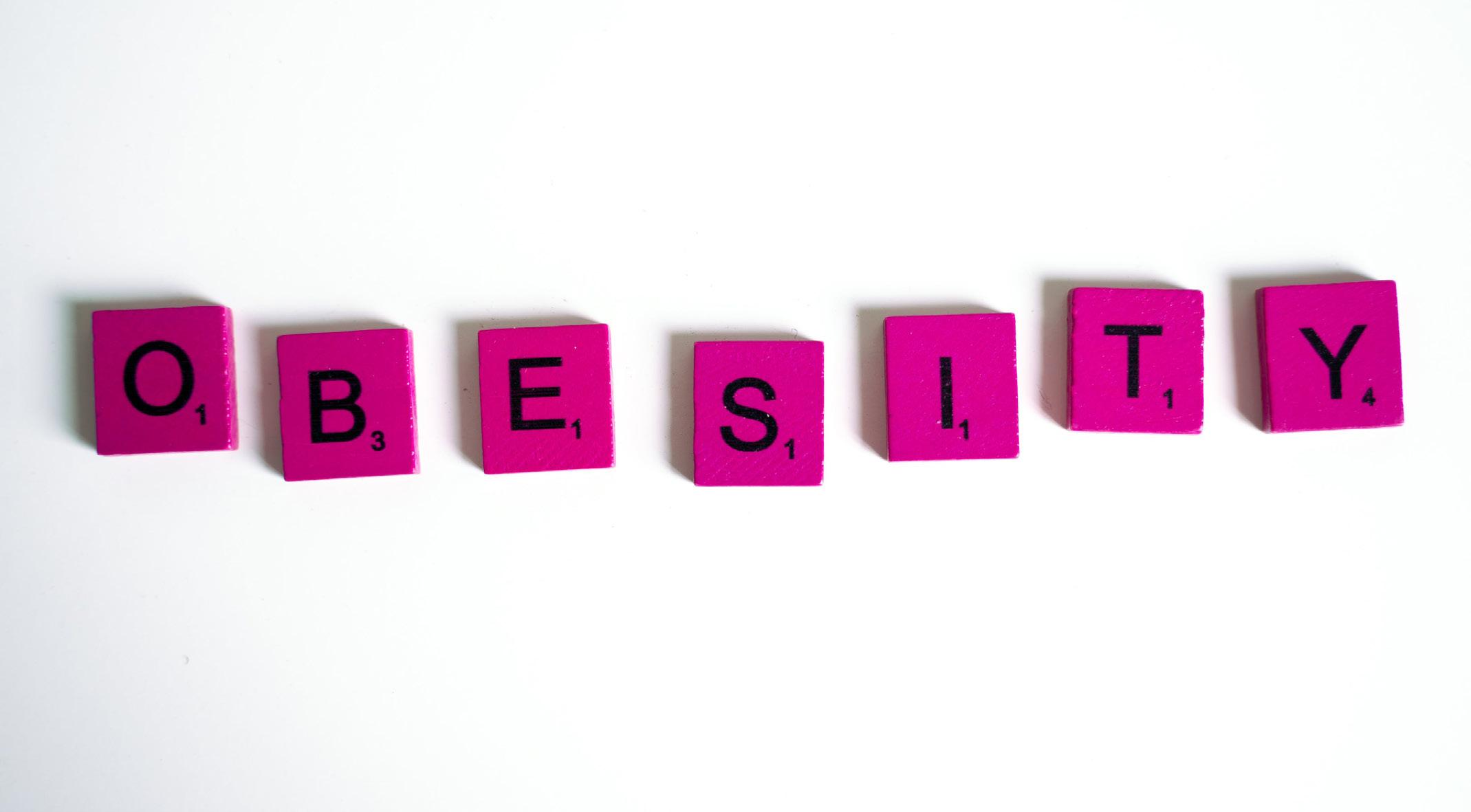
FIBROIDS

The
American Journal of Obstetrics and Gynecology. According to the journal and relying on evidencebased ultrasounds, 25% of Black women will develop fibroids by the age of two with that percentage increasing to 80% probability by age 50.
Common symptoms of fibroids include heavy, prolonged or irregular periods, menstrual pain, pelvic pressure, constipation, frequent or challenging urination, and pain in the pelvis, back or
legs. A national survey comparing African American and white women, published in the Journal of Women’s Health, indicated that African-American women often experience more severe symptoms associated with fibroids.
LIFESTYLE HABITS THAT CAN REDUCE CHANCES OF FIBROIDS
Several factors can contribute to the heightened prevalence and severity of fibroids in Black women. Here are a few.
Genetic Predisposition: African-American women show an increased tendency toward fibroids due to genetic factors. According to USA Fibroid Centers, genetic predisposition is a significant factor in fibroid development, with a tendency for fibroids to run in families. Certain gene variations,
particularly in African-American women, may elevate the risk of fibroid formation. Additionally, hormonal differences play a role, as fibroids are growths sensitive to hormones, specifically estrogen and progesterone, fostering their development.
Dietary Factors: The article, "Current Perspectives about Nutrition in Gynecological Diseases," published in the Nutrients Journal in 2021, suggests that an improper diet, including specific food items like red meat, may elevate the risk of fibroids.
Obesity Rates: Higher rates of obesity in African-American women are linked to the occurrence of fibroids. The lack of access to fresh, healthy food and limited physical activity also serves as a significant trigger.
Vitamin D Deficiency: Many African-American women experience vitamin D deficiency due to increased melanin in the skin. While melanin protects the
skin from UV rays, it also hinders the body's ability to synthesize vitamin D.
Delayed Medical Intervention:
African-American women tend to endure fibroids for more extended periods than other racial groups due to a reluctance to seek medical help promptly. Instead, some attempt to manage symptoms with over-the-counter medications, delaying professional medical attention.
Healthcare Disparities:
African-American women face discrimination and mistreatment within the healthcare system, contributing to delayed medical attention. A national survey in the Journal of Women’s Health revealed that African-American women waited more than four years, while white women waited around three years before seeking treatment.
Hair Relaxer Usage: A study published in the American Journal of Epidemiology indicated that
the excessive use of hair relaxers containing hormonally active compounds and harsh chemicals can result in increased skin burns, potentially elevating the risk of developing fibroids.
African-American women face a disproportionate impact regarding the prevalence and severity of uterine fibroids, highlighting a significant health disparity. While various factors contribute to this discrepancy, adopting healthy lifestyles can help empower African-American women to reduce their risks, more effectively address disparities and promote community awareness.

An imbalance in Vitamin D might contribute to the development and growth of fibroids.
44 MOTIVATED WOMAN 45 MOTIVATED WOMAN
image displays fibroids around the uterus.
Adverse effects of SOCIAL MEDIA IN WOMEN
By Margaret Williams
Why do you have social media? Many people download social media apps to connect with friends and family, seek entertainment, stay in touch and keep up with new trends. While these initial purposes remain at the core of these platforms, their addictive nature and surging popularity have, unfortunately, altered our daily lives for the worse.
Social media apps permeate all aspects of our existence, influencing how we find things to do,
places to vacation, recipes to try and even what to wear. Despite the perception that using social media throughout the day may alleviate stress and serve as an escape, its subtle impacts can contribute to mental health issues. The negative effects vary based on the user's age, and constant exposure to unattainable standards particularly affects women, extending beyond the online realm.
For middle school girls, who are in a crucial stage of development, exposure to older women and their peers online has been demonstrated to impact their social skills. This influence is not solely due to the comparisons they make with themselves, but also because a significant portion of their interactions occur online.

Women aged 30-50 are most likely to encounter content related to motherhood or employment based on the platform’s algorithm and feed curation. This affects women in this age group differently based on personality, lifestyle and position. The prevailing trend among these women is a tendency to negatively compare their lives, career accomplishments, family dynamics and fitness to those they follow. Juggling these comparisons while managing a hectic lifestyle leaves little room for self-care, contributing to a mental load filled with negative comparisons.
In contrast, the impact on young adults and college students is multifaceted. This generation has grown up in a world shaped by the evolution of social media, making it more integral to their everyday lives. Exposure to unrealistic beauty standards has fostered an acceptance and normalization of negative body imaging. Additionally, individuals who are from Gen Z feel compelled to share their whereabouts not occasionally, but on a daily basis, contributing to feelings of isolation and privacy concerns.
The constant stream of posts showcasing people going out, being active and engaging in various activities can leave viewers feeling isolated and inadequate. Moreover, the habit of sharing excessive personal information or opinions on social media has been observed to have repercussions later in life. Excessive use of social media serves as a significant factor in these mental health struggles, with the
duration of exposure correlating with the levels of isolation and vulnerability felt by users.
Although mental health awareness is at its peak of acceptance, the age at which girls experience negative mental health problems has been decreasing. For middle school girls, who are in a crucial stage of development, exposure to older women and their peers online has been demonstrated to impact their social skills. This influence is not solely due to the comparisons they make with themselves, but also because a significant portion of their interactions occur online. As a result, when these girls engage in person, they often experience heightened anxiety and stress –which can lead to depression, low self-esteem and eating disorders. While these effects can occur in women of all ages, it is only recently that they have been observed so frequently among an entire generation, as noted in the 2017 article by Leah Schafer on the Harvard Graduate School of Education's website titled "Social media and teen anxiety."
Professor Wesley Stevens, who teaches Social Media and Society at the University of South Carolina, has conducted research and delivered lectures on the evolving understanding of the age at which social media impacts the mental health of its users. Discussing teens and technology, Stevens remarked, "Continual technology and social media use can be damaging to
mental health in early cognitive years, leading to increased distraction, overstimulation and cyberbullying.”
However, these research findings and opinions should not be taken at face value alone.
Social media, across all age groups, presents positive opportunities.
Women aged 30 and above use social media to connect based on shared interests and lifestyles exemplified by recent platform updates like Facebook’s “Communities” addition.
Meanwhile, young adults utilize social media as a platform to advocate for change and raise awareness about social issues they care about. Recognizing social media as an outlet highlights some of the reasons people justify its use today and underscores the importance of acknowledging its strengths.
There is no foolproof way to completely counter the negative mental health effects of social media, but there are strategies to shift individual mindsets and reduce the time spent online. This entails cultivating a balanced relationship with these platforms to create positive content.
But when it really comes down to it, we should make a deliberate effort to foster offline connections through hobbies, sports, networking or community service.
Despite the perception that using social media throughout the day may alleviate stress and serve as an escape, its subtle impacts can contribute to mental health issues. The negative effects vary based on the user's age, and constant exposure to unattainable standards particularly affects women, extending beyond the online realm.

46 MOTIVATED WOMAN 47 MOTIVATED WOMAN
Margaret Williams is currently studying journalism at the University of South Carolina.
IS HOUSEHOLD EQUITY RELATED TO PARTNER ABANDONMENT AFTER A SERIOUS ILLNESS?
By Tarrah Bonaparte

Partner abandonment describes a partner leaving a relationship following the suffering of an illness. For example, a marriage ends in divorce after the wife is diagnosed and treated for breast cancer.
There’s a lot of anecdotal and research data surrounding partner abandonment after a serious illness. Partner abandonment describes a partner leaving a relationship following the suffering of an illness. For example, a marriage ends in divorce after the wife is diagnosed and treated for breast cancer. Many women share stories of experiencing divorce after a serious illness. There are conversations in doctor’s offices where a woman suffers a life-threatening diagnosis that includes education about the risk for marital breakdown. This article looks at how often this occurs and the impacts on marriages. To be specific, it’s useful to shed light on the gender differences that are at play when it comes to serious illness and partner abandonment and whether equity in household labor might contribute to this. Women experience partner abandonment and divorce at a higher rate if they are the ones suffering a serious illness. According to the National Institutes of Health, marriages surviving serious illness really depended on the quality of the relationship. Higher marital satisfaction increases the likelihood that the marriage will survive the serious illness.
One thing that may be correlated to partner abandonment and marriage quality is equity within the household. Taking a closer look at labor division in the home might help us understand why partner abandonment occurs. Married individuals should consider:
• Does the level of household equity influence the rate of partner abandonment when married women undergo a serious illness?
• If a woman performs more of the household duties, is she at higher risk for divorce if she suffers a serious illness?
Women experience partner abandonment and divorce at
a higher rate if they are the ones suffering a serious illness.
Experiencing an illness may lead to changes in spouses' roles, particularly an increase in caregiving responsibilities for the healthy spouse. This can impact the dynamics of marital relationships, as discussed in the article titled "Caregivers of Frail Elders: Updating a National Profile," published in The Gerontologist.
In the study titled "Gender Disparity in the Rate of Partner Abandonment in Patients with Serious Medical Illness," published in the journal Cancer, small clinical studies have identified a greater risk of divorce when wives experience a serious illness compared to when husbands do. Additionally, this study shared that in marriages where the woman suffered with a serious illness, 20% of those marriages ended in divorce.
There is substantial research indicating that women commonly express they shoulder a greater share of household responsibilities compared to their partners. According to the Pew

Research Center, 59% of women acknowledge handling more of the household workload. This pattern may have implications for marital satisfaction.
It's worth contemplating –if 59% of women report taking on most of the household responsibilities, the cessation or reduction of these tasks due to a serious illness can impact marital satisfaction in a negative way. This disruption or halt in labor related to household chores can affect the quality of the relationship for both partners. This impact is felt by both partners if the healthy spouse either neglects these responsibilities or harbors resentment toward the spouse dealing with the illness for her inability to fulfill these tasks.
Discussing equity in household labor becomes crucial when considering a long-term partnership. This conversation should extend to expectations regarding ongoing responsibilities and role adjustments if either
partner were to experience a serious illness. Approaching these discussions with thoughtfulness and honesty can significantly contribute to navigating the complexities of life, providing insights into how your marriage may evolve in the face of significant life changes, such as coping with a serious illness.

Tarrah Bonaparte, LCSW, is in private practice in Nashville, Tenn. She works closely with those navigating through anxiety and depression.
48 MOTIVATED WOMAN 49 MOTIVATED WOMAN
FROM HEARTACHE TO EMPOWERMENT:
SOMMER CLAYBORNE'S JOURNEY SUPPORTING WOMEN IN PRENATAL CARE
In the face of disparities in prenatal healthcare throughout the United States, certain women, driven by their own encounters with medical care, strive to extend a supportive hand to those lacking such assistance. Among the advocates for women in Ohio is Sommer Clayborne. A doula and early-intervention developmental specialist, the 37-year-old is dedicated to ensuring that all women have the necessary support system to feel supported.
"Every woman deserves a doula," Clayborne said. "They need a support system that advocates for them and contributes to creating a birthing experience that becomes a cherished lifelong
By Michael C.
memory. While it may not be perfect, it should be better than the alternative."
Clayborne decided to become a doula following a personal experience that left her feeling
isolated after receiving devastating news. In their eight-year journey to conceive, she and her husband, Eddie, explored in vitro fertilization (IVF) without success. Recalling the moment she received
the phone call informing her of the bad news after the two-week waiting period, she realized the nurse providing the information did not ensure she was in a safe place, had support for the tragic outcome or even knew what the next steps would involve.
I did—alone going through a loss. During the Covid-19 shutdown, I decided to do something about this and started my doula certification.”
Every woman deserves a doula. They need a support system that advocates for them and contributes to creating a birthing experience that becomes a cherished lifelong memory. While it may not be perfect, it should be better than the alternative.

“It shattered my life right then and there,” Clayborne said. “I remember thinking she didn’t even ask if someone was around, if my husband was home or where I was. I could have been in the car. There is such a disconnect between the healthcare field and the actual people who are going through these things.”
Sommer continued, saying, “I don’t want anyone to feel the way
As a doula with this experience in mind, Clayborne assists expecting mothers in making and keeping appointments, ensures they receive the attention and care they deserve and empowers them to use their voice.
Clayborne recounted an experience with an expectant mother with cerebral palsy who didn’t receive support in the exam room, despite being in a wheelchair.
"With no one there to assist, the woman held her breath,

She is just a cool little girl who is defying everything that could have been. She’s tiny, but she packs a mean punch. It is so bizarre that I am starting to see our family features in her.
counted to five and lifted herself up onto the bed. This was her prayer that she didn’t fall," Clayborne said. “She knew that if she fell, there was a good chance of hurting herself or her baby.

The Claybornes with their daughter, Essa Sommer Clayborne
50 MOTIVATED WOMAN 51 MOTIVATED WOMAN

She told me this was the norm for her during her health visits.”
Clayborne was outraged that no one was fazed or came to see how she was doing. “I made her aware that this treatment was not okay.”
I don’t want anyone to feel the way I did—alone going through a loss.
During the Covid-19 shutdown, I decided to do something about this and started my doula certification.
Drawing from her own experiences, which were marked by a lack of support from healthcare professionals, Sommer channels these encounters to provide encouragement to others.
She and her husband eventually decided to explore adoption. Surprisingly, she discovered joy in the adoption journey. After a year-long process involving background checks, home visits and extensive paperwork, the Claybornes adopted their now four-year-old daughter - Essa (Ee-sah).
“She is just a cool little girl who is defying everything that could have been,” Clayborne said. “She’s tiny, but she packs a mean punch.
Sommer is now committed to assisting women in low-tomoderate income communities who are influenced by fear or past negative experiences or may not fully recognize their prenatal needs. She highlights that mothers frequently miss crucial appointments due to medical biases associated with demographics or socio-economic status. These biases contribute to an environment where women may feel reluctant to seek proper pain medications, advocate for appropriate birthing practices or articulate their basic needs for themselves and their children.
It is so bizarre that I am starting to see our family features in her.”
Having experienced the challenges of trying to have a child both biologically and through adoption, Clayborne brings a unique perspective to her role. Utilizing her insights, she is dedicated to improving her community and supporting women navigating the complexities of medical care bias. As a doula, her responsibilities range from home visits to being present in the labor and delivery room.
“Every mother’s desire is optimal health for herself and the best start for her baby,” she said. “I can engage with medical providers and midwives to address the unique needs of each patient, viewing every client holistically.”

52 MOTIVATED WOMAN
Sommer with daughter, Essa
NAVIGATING DISPARITIES: ADDRESSING INFANT MORTALITY AND MATERNAL WELL-BEING
By Ayo O.
Infant mortality, often referred to as infant death, is the tragic event of a baby passing away before their first birthday. The Centers for Disease Control and Prevention (CDC) defines the infant mortality rate as the number of infant deaths for every 1,000 live births. Alarmingly, the black community faces a disproportionate burden of infant deaths and maternal health challenges, both in developing and developed countries. In the United States, despite an overall decrease in infant mortality rates, black infants still experience double the mortality rate of white infants. In 2020, nearly 20,000 infants died in the U.S., with a record of 5.4 deaths per 1,000 live births. The leading causes of these deaths included birth defects, preterm birth and low birth weight, sudden infant death syndrome, injuries and maternal pregnancy complications.
In underdeveloped countries, additional factors contribute to infant mortality, such as neonatal sepsis, pneumonia, diarrhea, malaria, malnutrition and HIV. Infant mortality rates are crucial indicators of a country's health infrastructure, emphasizing the global significance of addressing this issue. Disturbingly, nonHispanic Blacks/African Americans

experience 2.4 times the infant mortality rate and 2.9 times the sudden infant death syndrome mortality rate compared to nonHispanic whites.
To combat this crisis, individuals like Tracy Golden, senior program manager at Healthy Start in South Carolina, are actively working to provide support for pregnant
Various social inequalities, including income, maternal age, marital status, parity and lifestyle choices, influence maternal health and contribute to health disparities. Low household income, in particular, limits access to healthcare, while lower educational levels among parents further impact the infant mortality rate.
women. Healthy Start, a communitybased program, aims to eliminate disparities in infant deaths and enhance the health of women and infants. Golden ensures pregnant women receive comprehensive care, including doula services, affirmative support, free childbirth classes and nutritional assistance. The focus is on empowering women to understand their bodies.
“We want women to be in tune with their body and understand whatever is wrong with them and we’ve realized that women do better when they have doula support, so we’ve made provisions for consultants who offer doula support from the twentieth week up to pregnancy. They work with women on affirmation support, and we also provide free childbirth classes.”
Notably, Healthy Start is committed not only to providing doula support but also addressing
feeding and nutritional intake. A curriculum guides women through healthy eating up to the eighteenth month to prevent malnutrition, planning nutritious meals and offering demonstrations for meal preparation.
The correlation between infant death and maternal health is evident, as a mother's health environment during pregnancy can significantly impact both the pregnancy outcome and the infant's health. Unfortunately, Black mothers face challenges in accessing timely prenatal care, contributing to higher rates of maternal complications and infant mortality. This discrepancy is attributed to variations in healthcare quality, underlying chronic conditions, structural racism and implicit bias.
Golden expresses concern about the alarming increase in the infant mortality rate in South Carolina, emphasizing the need to provide extensive support to pregnant women to prevent further escalation. Various social inequalities, including income, maternal age, marital status, parity and lifestyle choices, influence maternal health and contribute to health disparities. Low household income, in particular, limits access to healthcare, while lower educational levels among parents further impact the infant mortality rate.
Globally, the World Health Organization (WHO) reports a significant number of maternal deaths despite progress in maternal

health. Direct causes include excessive blood loss, infection, high blood pressure, unsafe abortion and obstructed labor. Indirect causes include anemia, malaria and heart disease. Recognizing urgent maternal warning signs is crucial, including severe headache, extreme swelling, breathing difficulties, heavy bleeding or overwhelming tiredness. In the face of rising infant and maternal mortality rates, organizations like Healthy Start play a pivotal role in encouraging pregnant women and providing essential support. Regular medical checkups and sharing pregnancy history during healthcare visits are vital steps for Black mothers to ensure their well-being and that of their infants. It is imperative to engage healthcare providers who understand the unique needs of Black mothers to address these health disparities.
54 MOTIVATED WOMAN 55 MOTIVATED WOMAN
Tracy Golden (right) with Lamikka Samuel (left), director and program manager of Healthy Start, following a presentation at a conference.
WORD SEARCH
WOMEN’S EMPOWERMENT EDITION
E I I B F O L Y R W G N I R E W O P M E
T N K R L A U S N E S W Q R E W O K L E
A S A E M A E R O E E V I T A V O N N I
N P W A G O K W Q U P Y E R O T S N T B
O I O T N A J C H T R A I L B L A Z E R
I R L H O A S K O L O S D O X K W E Q K
S I P T D C H T L N P L I R D O R D A C
S N Q A V U U P O Q F S U Q I L P S W O
A G L K C R X J K N M I P F X V F D K M
P V U I O I H O P V I O D Z E H E B O P
N A F N Y N T L F L D S T E I C C N L E
O L I G T I N N F Y R K H T N E A V P L
G O T Y Y P R K E M I B S I F T P R Y L
N P U P S H A O I H L Z W A
N K O W G I
I T A O S J D P S L T M O E R G L A C N
N E E K A K I A T J B U Z E R C Z X B G
N Y B L L F A X Y X A K A C E R Y O P L
U U H H C C N N O P E K C X Z Y K P K O
T I E W R X T H T D S V I S I O N A R Y
S O U N S T O P P A B L E K W E P L O M
ASTONISHING
AUTHENTIC
BEAUTIFUL
BREATHTAKING
CLASSY COMPELLING
CONFIDENT
DRIVEN EMPOWERING FEISTY GRACEFUL INNOVATIVE INSPIRING
PASSIONATE
* Visit www.motivatedwoman.org for word search puzzle answers.


RADIANT SENSUAL STUNNING
TRAILBLAZER
UNSTOPPABLE VISIONARY
SET HER UP FOR SUCCESS IN AND OUT OF THE CLASSROOM.
Support your child’s overall health and wellness by being informed.
It’s important to talk about the risks of underage drinking and substance use from a young age, and continue those conversations as your child gets older and becomes more independent. For tips on how—and when—to begin the conversation, visit
www.underagedrinking.samhsa.gov


56 MOTIVATED WOMAN 57 MOTIVATED WOMAN
#TalkTheyHearYou PEP20-03-01-033
BY SHAWNA DENA’
Danessa Myricks has done it again! She continued to impress with her latest releases in 2023. The Yummy Skin Serum Foundation and Yummy Blurring Balm Powder took the beauty community by storm, and they are absolute musthaves in any makeup collection. For those exploring her brand, these products are an excellent starting point.
The Yummy Skin Blurring Balm Powder Flushed-Matte Color for Cheek & Lip made its debut in 2023, featuring a dazzling array of six shades priced at $25, available at Sephora stores, sephora.com, and danessamyricksbeauty.com. The delightful shades include Rosé N Brunch (neutral rosy pink), Jubilee (soft terracotta), Primadonna (vibrant hot pink), Golden Hour (vivid orange nectar), Bellini (poppy golden peach) and Dancing Queen (vivid plum). I proudly own all six shades of this versatile product, serving as both a cream blush and a lip color. The formula's creamy texture makes it a joy to apply, catering to various preferences.
Personally, I favor Jubilee for its stunning orange hue, perfect for year-round wear, especially enhancing the beauty


of brown skin complexions. The trend of embracing an orange lip, particularly when paired with a brown liner, has gained momentum, offering a fresh alternative to the classic red lip. Application is a breeze, whether using a beauty sponge, brush, or fingers. I opt for a brush to apply and blend, setting it with a complementary powder blush for a soft matte finish suitable for all skin types. I've enthusiastically recommended these blushes to friends of all shades, particularly suggesting Rosé N Brunch for those slightly lighter and Dancing Queen for a universal appeal as fall approaches. If you've been hesitant about using blush, now is the perfect opportunity to explore this user-friendly and extraordinary product.
The Yummy Skin Tint, also released in 2023, offers a radiant finish and comes in 16 shades, priced at $36. Available at Sephora stores, sephora.com, and danessamyricksbeauty.com, this fragrance-free and hydrating product is a game-changer. A little goes a long way, and even as an oily-combination skin type, I found it to be surprisingly effective during hot summer days. I initially overapplied but quickly learned that one squirt is sufficient. Shade 13, described as dark skin with warm golden undertones, turned out to be my perfect match. Despite my preference for fullcoverage matte foundations, this skin tint seamlessly blended with my routine, proving its versatility and compatibility with other products.
Danessa Myricks' products cater to

women of color, and the Yummy Skin Tint is a standout choice not just for summer but year-round. In the realm of beauty, Danessa Myricks has once again proven herself a trailblazer with her remarkable releases in 2023. The Yummy Skin Serum Foundation and Yummy Blurring Balm Powder have become iconic essentials, garnering acclaim across the beauty community. For those venturing into the world of Danessa Myricks, these products stand as an excellent introduction to her innovative brand.

Shawna Dena’ passionately embraces makeup, sharing her brand experiences. Hailing from North Carolina, she acquired her mastery of makeup through YouTube, creating a personal haven of creativity and security. Find her makeup tutorials and reviews on @ShawnaDena_16 (TikTok) and Shawna Dena (YouTube).

THE WORDS WON’T COME OUT Shampale Fenessa
sometimes there are no words for heartbreak, miscarriages, divorces, losing, fighting, bleeding, and needing
no words to describe your firstborns' smile, laugh, cry, the lyrics to their favorite lullaby hush, little baby, don’t say a word
i am the flame crackling under a boiling pot of water sanitizing bottles while my crying baby waddles
hush, little baby, don’t say
sometimes there are no words for your wounds, your womb, your mother, your father dying too soon
words aren’t great enough, strong enough, or proud enough to cry cause your daddy never had a chance to hold your daughter, your son, you sung, you sing the blues
hush little baby
no words describe pregnancy loss, feeling lost, or losing a child, words aren’t quiet enough to whisper that it is not your fault in your conscious hush
sometimes i can't hear myself think, trying to believe, trying to conceive, trying to cope, trying to find hope
58 MOTIVATED WOMAN
Shawna’s Makeup Corner
DANESSA MYRICKS’ BEAUTY TRIUMPHS: UNVEILING THE YUMMY SKIN COLLECTION
BREAKING BARRIERS:
ADDRESSING HEALTHCARE INEQUITIES
FOR WOMEN IN THE U.S.
By Megan Freeman

It is crucial to recognize the growing health inequities in the United States, leading to significant human costs such as excessive morbidity, premature mortality, increased bereavement, heightened reliance on unpaid caregivers, unfulfilled human potential and diminished social cohesion. Women, particularly African American and other individuals of color, are disproportionately affected by these health inequities.
According to a recent analysis by Deloitte, health inequities pose a threat to the economic well-being of the United States. Currently, these inequities contribute to approximately $320 billion in annual healthcare spending. Social Determinants of Health (SDOH), influenced by environmental, economic
and social structures, have created detrimental health and living conditions, leading to preventable health disparities among underserved communities and communities of color. These disparities include an increased prevalence of chronic diseases and more severe cases of infectious diseases like Covid-19 that remain unaddressed.
For instance, women frequently receive lower pay than their male counterparts, placing an additional burden on funding for their healthcare needs. Moreover, mothers with children who require screening for various illnesses and diseases, face challenges accessing adequate health plans and care facilities based on their residential locations. In underserved communities, some pregnant women
Despite medical and treatment advances, women continue to face disproportionate effects from various diseases and conditions, encompassing chronic pain, depression, autoimmune diseases, osteoporosis and dementia.” - National Institutes of Health.
may forgo regular prenatal care due to financial constraints, transportation issues and living conditions. Many of us may know women living with diabetes, high blood pressure, obesity, hypertension or chronic diseases, who often struggle with insurance companies to afford their necessary medications. Too often, many healthcare systems exhibit disparities for women based on race and social status, resulting in unequal care options. Despite medical and treatment advances, women continue to face disproportionate effects from various diseases and conditions, encompassing chronic pain, depression, autoimmune diseases, osteoporosis and dementia, as highlighted by the National Institutes of Health. Furthermore, specific conditions affecting women, such as endometriosis, receive inadequate
attention in terms of research and lack effective diagnostics and treatment options. The existing disparities underscore the need for targeted efforts to address healthcare inequities for women across different demographics.
Healthcare professionals are actively addressing this global concern by implementing various initiatives. Some are establishing mobile clinics in remote areas that lack easy access to healthcare facilities. Local businesses are also organizing health fairs in rural regions, providing free health screenings to residents who otherwise would not have access. To complement this, healthcare providers are adopting diverse strategies and incorporating experts from different backgrounds, ensuring a broader range of perspectives at the decision-making table. These efforts aim to enhance healthcare accessibility and inclusivity while recognizing the importance of diverse approaches in combating health disparities.
Women must prioritize their health by researching and selecting doctors they feel comfortable and can trust. It's crucial to advocate for your health, asking questions until you comprehend the big picture. Seeking second or third opinions, staying within your insurance network and exploring free or low-income clinics for medical assistance are essential. Additionally, supporting communities, staying engaged, providing opinions, learning about resources, networking and sharing information contribute to the overall well-being of women.

According to the Centers for Disease Control and Prevention (CDC), Black or African-American individuals in the U.S. experience a four-year lower life expectancy rate than any other race. Community, faith-based organizations and healthcare providers must collaborate with state and local governments to develop programs and policies based on a health equity framework to ensure everyone has an opportunity to receive affordable and equal healthcare.
Megan Freeman earned a Doctorate of Strategic Leadership Degree with a concentration in leadership coaching from Regent University. She is the founder, owner and CEO of Leadernificent LLC, an organizational development business.
61 MOTIVATED WOMAN 60 MOTIVATED WOMAN
SCIII: CLAFLIN UNIVERSITY AND CLINTON COLLEGE

Motivated Woman serves as the official publication of the South Carolina Institutes of Innovation and Information (SCIII), an initiative committed to fortifying South Carolina's participating Historically Black Colleges and Universities (HBCUs) by establishing direct pathways from each institute to opportunities within the state's business and industry sectors. This edition of Motivated Woman spotlights the SCIII institutes at Claflin University and Clinton College.

EMPOWERING WOMEN IN NURSING AND EDUCATION: THE INSTITUTE FOR TEACHING AND NURSING AT CLAFLIN UNIVERSITY PROVIDES TRANSFORMATIVE IMPACT
South Carolina Institutes of Innovation and Information Foundation (SCIII) proudly joined forces with Claflin University to establish The Institute for Teaching and Nursing (TITAN). Through TITAN, Claflin University (Claflin) harnessed its capabilities
to significantly influence the realms of education and nursing by fostering innovation and providing invaluable educational opportunities.
Claflin’s achievements include the integration of telehealth Mobile Doc units into clinical nursing
The American Heart Association identifies eight essential areas for improving cardiovascular health, including a healthy diet, regular physical activity, tobacco avoidance, sufficient sleep, maintaining a healthy weight and managing cholesterol, blood glucose and blood pressure levels.
education, groundbreaking work in cardiovascular health research and a commitment to advancing education.
As Claflin celebrates the contributions of women, it acknowledges the pivotal role women play in nursing and education. Recognizing the impact of personal health on professional efficacy, TITAN emphasizes the importance of a heart-healthy lifestyle for women in these roles. Stress, sedentary habits and irregular eating patterns are common challenges in teaching and nursing professions and can adversely affect cardiovascular health. By setting a healthy example, women become influential role models, inspiring students to make heart-healthy decisions and contribute to a healthier society.
Heart health is crucial for overall well-being, with specific considerations for women.
According to the Centers for Disease Control and Prevention (CDC), heart disease claimed

nearly 300,000 women in 2017, making it the leading cause of death for American women.
Recommendations from the US Food & Drug Administration underscore the importance of choosing low-sodium, low-trans-fat, and low-sugar diets. Regular checkups with primary care providers are essential to manage health issues like high blood pressure, diabetes and high cholesterol - reducing the risk of heart disease.
The American Heart Association identifies eight essential areas for improving cardiovascular health, including a healthy diet, regular physical activity, tobacco avoidance, sufficient sleep, maintaining a healthy weight and managing cholesterol, blood glucose and blood pressure levels.
Looking ahead, Claflin’s plans
include preparing high school students for education and nursing college programs, recruiting across South Carolina for both programs and offering programs to improve student health. Claflin is thrilled about the impactful activities planned through
TITAN emphasizes the importance of a heart-healthy lifestyle for women. Stress, sedentary habits and irregular eating patterns are common challenges in teaching and nursing professions and can adversely affect cardiovascular health.
62 MOTIVATED WOMAN 63 MOTIVATED WOMAN
The baccalaureate degree program in nursing at Claflin University is accredited by the Commission on Collegiate Nursing Education.

TITAN in collaboration with SCIII. The support of SCIII has been instrumental in broadening opportunities and exposure for students and future cohorts of college students. Together, Claflin and SCIII are making strides in shaping the future of education and nursing at the university.

FORGING A HEALTHIER TOMORROW: THE WACH INSTITUTE'S VISION FOR EQUITY AND WELL-BEING IN SOUTH CAROLINA
The Wellness and Community Health (WACH) Institute was established at Clinton College to eliminate racial health disparities and ensure equitable community health outcomes through participatory evaluation, applied research, assessment, planning and data services.


Clinton College is a private historically black Christian college in Rock Hill, South Carolina. It is accredited by the Transnational Association of Christian Colleges and Schools.
in community health and creating a pipeline to health professions.
seven four-year HBCUs’ overall capabilities and contributions for the citizens and residents of the state. Clinton College’s WACH Institute is the first of its kind to offer holistic health and wellness Black nurses diversify healthcare, mitigating disparities and enhancing overall quality for all.
Lester A. McCorn, D.Min., the 13th President of Clinton College in South Carolina, envisions a South Carolina where informed and empowered citizens attain health equity and a high quality of life. To realize this vision, McCorn established the WACH Institute with objectives focused on advocacy, research, offering accredited certificates and degrees
SCIII was inspired by the late South Carolina Senator John L. Scott, Jr.’s vision to revolutionize and cultivate South Carolina’s
64 MOTIVATED WOMAN 65 MOTIVATED WOMAN
Heart2Heart and Clinton’s WACH Planning Team

resources to both students, faculty and staff at the college campus in addition to the surrounding Black and brown community.
SCIII supports the WACH Institute by assisting with funding, resources and network partnerships. With guidance from SCIII Executive Director, Gwynth R. Nelson, Ph.D., the WACH Institute has begun to lay the foundation for creating and developing health and wellness programs that speak to the specific needs of community residents.
Since its inception, WACH has embarked on the long road to addressing the prevalence of risk factors, decreasing chronic disease
burden and injury occurrence and speaking to health promotion in the community. The daily activities of the WACH Institute are directed by Lafarah S. Frazier, Dr.P.H., and a team of community health coordinators. The WACH Institute worked closely with a consulting firm to develop a public health strategy dedicated to the individuals and communities disproportionately impacted by adverse health outcomes.
After identifying areas of opportunity, The WACH Institute is now working toward building an institutional public health infrastructure to prepare the next generation of community health
leaders. In terms of sexual health, WACH is creating more awareness around HIV and STIs ensuring that testing services are more accessible.
Standing as a beacon of commitment to eradicating racial health disparities and fostering equitable community health outcomes, the institute's dedication to improving lives and promoting health reflects a transformative vision for a healthier and more equitable South Carolina.

STRENGTHENING SOUTH CAROLINA'S HBCUS
South Carolina Institutes of Innovation & Information (SCIII) is focused on revolutionizing and cultivating
South Carolina's seven four-year HBCUs.
66 MOTIVATED WOMAN 67 MOTIVATED WOMAN SOUTH CAROLINA INSTITUTES OF INNOVATION & INFORMATION
www.sciii.net
THRIVING THROUGH TEAMWORK:
BUILDING YOUR MENTAL WELLNESS DREAM TEAM
Alexandria Smith, lovingly known as Alex, taps into her roles as a stay-at-home mom, wife and dedicated disciple of Christ to provide valuable insights on balancing life's challenges while coping with chronic mental illness. In each edition of Motivated Woman, Alex shares her experiences with our readers.

When my oldest daughter was around two and a half years old, my life took an unexpected turn. As a dedicated math teacher, I always prided myself on efficiency and effectiveness. However, I noticed concerning lapses in my work from missed emails to paperwork errors. These unsettling signs led me to seek help from my gynecologist, setting in motion a transformative journey from mental illness to developing a greater well-being. My gynecologist embarked on a comprehensive investigation, conducting numerous tests and
even having me maintain a journal. The verdict was clear - my struggle was psychological, not physical. I was referred to a psychologist specializing in perinatal mood and anxiety disorders.
Throughout my mental wellness journey, one consistent presence was having my psychiatrist oversee my medication management. While medication adherence was unwavering, psychological care had been less consistent. Over the years, I'd consulted various therapists and psychologists. However, it was my encounter with my current psychologist that marked a pivotal moment.
Under her guidance, I dove into cognitive behavioral therapy, which allowed me to dissect my triggers and confront the anxiety that had been disrupting my life. This profound transformation not only restored my equilibrium but also instilled in me a newfound perspective.
My psychologist assumed the role of the coordinator of what I've come to call my "Collaborative Care Team." She facilitated seamless communication briefings
among my mental health team. Being part of the same medical group, my psychologist and psychiatrist exchanged insights electronically through my medical chart. This streamlined approach empowered them to conduct targeted assessments and prescribe precise interventions when needed.
As my mental health challenges began to affect my marital harmony, my psychologist recommended marriage counseling within the same medical group. This addition further solidified the synergy of my care team.
This integrated approach was not just about routine care, but it was invaluable during emergencies. During inpatient hospital visits, my medical history was readily accessible via my chart, which allowed for swift and wellinformed decision-making.
Recognizing the need for holistic support, I recently welcomed a productivity coach onto my care team. Though not a mental health professional, she offers insights on time management, delegation and
stress reduction. Her guidance ensures that my responsibilities don't become overwhelming. With my collaborative care team - consisting of my psychiatrist, psychologist, marriage counselor and productivity coach - I've achieved stability in my mental health journey. What was once a battle against mental illness has blossomed into a life of well-being. As I share the insights and tools that helped me transcend my personal mental health challenges, I hope to equip you with the tools necessary to build your own mental wellness dream team. They are:
1. A psychiatrist is a medical doctor or doctor of osteopathic medicine who specializes in mental health. They can diagnose mental health conditions, provide medical evaluations and prescribe medication. Their focus is typically on the biological and medical aspects of mental health.
2. A psychologist holds a doctoral degree in psychology. They specialize in psychological assessment, diagnosis and therapy. They can offer various types of therapy, including cognitive-behavioral therapy, psychotherapy and counseling. Their treatments are nonmedication based.
3. A licensed professional counselor holds a master’s degree in counseling or a

related field. They are trained to provide counseling and therapy services. They work with individuals, couples and families on a wide range of emotional and mental health issues. Their focus is mainly on talk therapy and developing coping strategies.
SEEKING YOUR PATH TO WELLNESS
In sharing my journey from mental illness to mental wellness, I hope to inspire you to embark on your own transformative path. It's essential to recognize that you don't have to navigate this journey alone. Building your mental wellness dream team can make all the difference.
Remember, seeking help is a sign of strength, not weakness. If you're struggling with your mental health, consider reaching
out to professionals who can provide guidance, whether it's a psychologist, psychiatrist or licensed professional counselor. Collaborative care can be a powerful force in your journey.
For more mental health and well-being resources, visit MomWifeWorshipLife.com.
Together, we can find balance in motherhood, strength in marriage and serenity in mental wellness. Let's thrive and transform together, one step at a time.
With love and empowerment,

68 MOTIVATED WOMAN 69 MOTIVATED WOMAN Thrive & Transform with Alex
Thrive & Transform with Alex
Smith with her husband, Stephen, and two daughters, Alia and Mia
Alexandria Smith
BEYOND LUXURY: THE HOLISTIC BENEFITS OF MASSAGE THERAPY FOR
WOMEN'S WELL-BEING
By Megan Freeman

Some women may view massages as a luxury or a special day at the spa, but these sessions offer numerous health benefits, affecting them physically, mentally and socially. According to the Mayo Clinic Health System, the physical benefits of massage include improved circulation, better sleep quality, reduced pain and soreness and a strengthened immune response.
The mental and physical toll of a busy lifestyle can manifest in signs like a relieved sigh after a long day, indicating the need for relaxation. Constantly juggling responsibilities can lead to anxiety, insomnia, headaches, nerve pain and depression. Massage therapy has been proven to help alleviate these conditions over time, with specialized massages available for various health conditions.
Establishments like Massage
Envy offer monthly packages that focus on specific areas through personalized experiences like massage and stretch therapy, as well as facials. Recognizing the toll of daily life on the body, they advocate for investing in self-care,
Constantly juggling responsibilities can lead to anxiety, insomnia, headaches, nerve pain and depression. Massage therapy has been proven to help alleviate these conditions over time, with specialized massages available for various health conditions.
just as one would budget for other personal expenses like hair, nails, dining out, or trips.
Studies, such as one in the Iranian Journal of Nursing and

Midwifery Research, reveal that women experienced improved relationships and felt invigorated after massages. Additionally, Swedish-style massages are considered effective for preventing and treating hypertension in women, a condition affecting approximately 50 million people in the United States, with numbers on the rise.
Beyond the health benefits, getting massages presents social opportunities for women, offering a reason to celebrate, relax or engage in an activity. Women can go for massages without a specific issue, enjoying time with friends.
Just as conversations flow in salons and barbershops, therapists often engage in similar discussions during sessions, providing an outlet for women to clear their minds or discuss fewer personal matters.
However, it's crucial to remember to stay hydrated after a massage to reduce soreness and eliminate toxins.
Amy Grutzmacher, a licensed massage therapist, emphasizes the importance of water, likening muscles to sponges that become more pliable with hydration, helping release substances during the massage process. Grutzmacher stated in Hackensack Meridian Health, “Picture one of your muscles as a sponge. A dried-up sponge is hard and rigid but once it’s submerged in water, it becomes supple. Our muscles also soak up water like a sponge and become
more pliable with hydration. It’s beneficial to drink water after your massage because as the massage therapist manipulates your muscles, substances are released.”
There are multifaceted benefits of massages, such as the positive impact on women’s physical, mental and social wellbeing. Beyond the commonly perceived luxury, massages also offer tangible health benefits. With this being said, grab your best friends, go get massages and sip on your favorite beverages.

Megan Freeman earned a Doctorate of Strategic Leadership Degree with a concentration in leadership coaching from Regent University. She is the founder, owner and CEO of Leadernificent LLC, an organizational development business.
70 MOTIVATED WOMAN 71 MOTIVATED WOMAN
NAVIGATING WELLNESS: SAFE AND EFFECTIVE STRATEGIES FOR WEIGHT MANAGEMENT
Maintaining a healthy weight is crucial for overall well-being, and adopting safe and sustainable practices is key to long-term success. Beyond aesthetic considerations, a healthy weight is linked to a reduced risk of various chronic conditions such as heart disease, diabetes and hypertension. Proper weight management also supports optimal functioning of the body's organs and systems, promoting longevity and quality of life. Additionally, maintaining a healthy weight contributes to improved energy levels, enhanced mood and increased self-confidence. It's not just about appearance; it's about fostering a lifestyle that prioritizes wellness and longevity. Here are some safe tips to help manage one’s weight.
BALANCED DIET:
• Focus on a balanced and varied diet that includes fruits, vegetables, whole grains, lean proteins and healthy fats.
• Practice portion control to avoid overeating.
REGULAR EXERCISE:
• Engage in regular physical activity, incorporating both aerobic exercises (like walking, jogging or cycling) and strength training.
• Aim for at least 150 minutes of moderate-intensity exercise per week.
STAY HYDRATED:
• Drink plenty of water throughout the day. Sometimes, our bodies
can confuse thirst with hunger.
• Limit sugary drinks and opt for water, herbal teas or infused water.
MINDFUL EATING:
• Pay attention to your body's hunger and fullness cues. Eat when you're hungry and stop when you're satisfied.
• Avoid distractions like TV or smartphones during meals to stay mindful of what you're eating.
GET ADEQUATE SLEEP:
• Lack of sleep can disrupt the body's hunger and fullness hormones, leading to overeating.
• Aim for seven to nine hours of quality sleep per night.
SET REALISTIC GOALS:
• Establish achievable and realistic weight loss goals. Rapid weight loss can be unhealthy and is often difficult to maintain.
• Celebrate small victories along the way to stay motivated.
SEEK PROFESSIONAL GUIDANCE:
• Consult with a registered dietitian or nutritionist to create a personalized and sustainable eating plan.
• Consider working with a fitness professional to design an exercise routine that suits your needs and preferences.
PRACTICE STRESS MANAGEMENT:
• Chronic stress can contribute to weight gain. Incorporate stress-reducing activities such

as meditation, yoga or deep breathing exercises into your routine.
AVOID FAD DIETS:
• Steer clear of extreme or restrictive diets that promise rapid weight loss. These can be harmful to your health and are often not sustainable.
• Instead, focus on creating a lifestyle that supports overall well-being.
STAY CONSISTENT:
• Weight management is a lifelong journey. Be patient and stay consistent with healthy habits even when progress is slow.
• Aim for long-term health improvements rather than quick fixes.
Remember, the key to successful weight management is adopting a holistic approach that includes healthy eating, regular physical activity and lifestyle modifications. Always consult with healthcare professionals before making significant changes to your diet or exercise routine, especially if you have underlying health conditions.
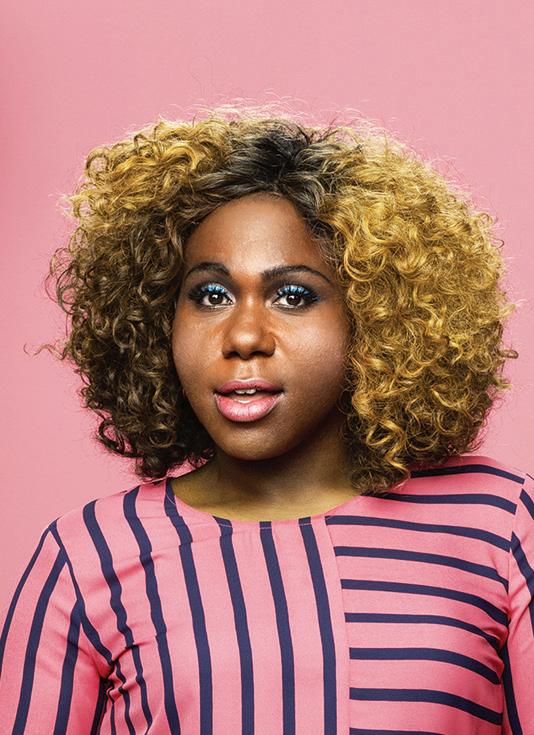














PrEP (pre-exposure prophylaxis) is a prescription medicine that’s taken as part of a routine before you’re exposed to HIV to help reduce your chances of getting it. Remember that PrEP doesn’t protect against other STIs, so be sure to use condoms and other healthy sex practices.
Your healthcare provider can help you determine whether PrEP is the best option for your situation.
Scan the code to learn more about PrEP or visit Healthysexuals.com
72 MOTIVATED WOMAN 73 MOTIVATED WOMAN DID YOU KNOW PrEP can be
preventing HIV?*
about 99% e ective in
HEALTHYSEXUAL, GILEAD, and the GILEAD Logo are trademarks of Gilead Sciences, Inc. ©2023 Gilead Sciences, Inc. All rights reserved. US-UNBC-1264 02/23
as prescribed.
*When taken

A good night's sleep is essential for overall well-being, both physically and mentally. Quality sleep contributes to improved mood, increased productivity and better overall health.
Individual sleep needs can vary, but the general consensus among health experts is that adults typically need seven to nine hours of sleep per night for optimal health and well-being.
Establishing good sleep hygiene practices and prioritizing sleep as a fundamental aspect of a healthy lifestyle can contribute significantly to reaping benefits such as enhanced cognitive
function, emotional well-being, physical health, increased energy productivity, better physical performance, cellular repair and growth and reduced inflammation. If you find yourself struggling to get a restful night's sleep, consider incorporating the following tips into your routine for a more rejuvenating and satisfying sleep experience.
Establish a Consistent Sleep Schedule: Maintaining a regular sleep schedule helps regulate your body's internal clock. Aim to go to bed and wake up at the same time every day, even on weekends. Consistency reinforces your
body's natural sleep-wake cycle, promoting better sleep quality.
Create a Relaxing Bedtime Routine: Engage in calming activities before bedtime to signal to your body that it's time to wind down. This could include reading a book, taking a warm bath, practicing gentle yoga or listening to soothing music. Establishing a pre-sleep routine helps transition your mind and body into a more relaxed state.
Optimize Your Sleep
Environment: Make your bedroom conducive to sleep by keeping it dark, quiet and cool. Invest in comfortable bedding and a
The blue light emitted by phones, tablets and computers can interfere with the production of the sleep hormone melatonin. Aim to turn off electronic devices at least an hour before bedtime.
supportive mattress. Consider using blackout curtains, earplugs or a white noise machine to minimize disruptions that could interrupt your sleep.
Be Mindful of Your Diet:
Avoid heavy meals, caffeine and nicotine close to bedtime. These substances can interfere with your ability to fall asleep and stay asleep. Instead, opt for a light snack if you're hungry before bedtime. Stay hydrated but try to limit liquids, especially closer to bedtime, to prevent frequent trips to the bathroom during the night.
Limit Screen Time Before Bed: The blue light emitted by phones, tablets and computers can interfere with the production of the sleep hormone melatonin. Aim to turn off electronic devices at least an hour before bedtime. Consider engaging in relaxing activities that don't involve screens, such as reading a physical book or practicing mindfulness.
Get Regular Exercise: Regular physical activity can promote

better sleep but try to complete your workout at least a few hours before bedtime. Exercise releases endorphins and helps regulate your sleep-wake cycle, contributing to more restful sleep.
Manage Stress and Anxiety:
Develop stress-management techniques, such as deep breathing exercises, meditation or journaling, to address any lingering worries or anxieties before bedtime. Practicing mindfulness can help calm the mind and prepare it for a restful night's sleep.
Consult a Healthcare Professional: If sleep problems persist, consider seeking advice from a healthcare professional. They can help identify any underlying issues or conditions that may be affecting your sleep and provide appropriate guidance or treatment.
Remember, quality sleep is a vital component of a healthy lifestyle. By incorporating these tips into your nightly routine, you can enhance your chances of enjoying a more restful and rejuvenating sleep experience.

74 MOTIVATED WOMAN 75 MOTIVATED WOMAN
TIPS FOR A RESTFUL NIGHT’S SLEEP
THE ESSENTIAL ROLE OF CORE STRENGTH IN OVERALL WELL-BEING
The significance of core strength reverberates in the pursuit of a healthy and active lifestyle. Serving as the foundation for nearly all physical activities, the core encompasses muscles in the belly, lower back, pelvis and hips. A robust core becomes imperative for executing forceful sports actions and upholding optimal posture. This article delves into the profound importance of core strength, fortified by credible studies, offering a comprehensive overview of the most effective workouts to cultivate a resilient core.
Chronic lower back pain affects millions worldwide, making the enhancement of core strength a valuable pursuit.
Research published in the “Journal of Physical Therapy Science” reveals that engaging in core strengthening exercises is an effective means of decreasing the frequency and severity of lower back pain. Notably, this study underscores the superiority of core strength training over conventional resistance training in alleviating chronic lower back pain. These findings highlight the utility of maintaining a robust core as a strategic approach to prevent and address this debilitating ailment.
A pivotal study published in the "Journal of Physical Therapy
Science" in 2018 revealed a significant correlation between core strength and improved posture. The maintenance of an upright posture is intricately linked to a strong core, substantially reducing the likelihood of developing musculoskeletal issues, such as back discomfort and improper spinal alignment. Weak core muscles, on the contrary, compel other muscle groups to compensate, leading to potential imbalances and injuries. This underscores the vital role of core strength not only in posture enhancement but also in preventing associated musculoskeletal challenges.
Maintaining a strong core is imperative for injury prevention, particularly during activities involving rapid changes in impact or direction. A comprehensive scientific review published in the “Journal of Sports Health” emphasized the significance of core stability in reducing the risk of injuries. Drawing insights from multiple studies, the review highlighted those interventions focused on core strength training, led to a remarkable reduction of up to 62% in injuries to the lower extremities and lower back. In high-intensity activities, a robust core plays a pivotal role in shock absorption and sustaining proper form, thereby significantly
lowering the risk of injuries such as sprains and strains. This highlights the importance of incorporating core strengthening exercises as a fundamental aspect of injury prevention strategies.
EFFECTIVE CORE STRENGTHENING EXERCISES
Embarking on a journey to strengthen your core involves incorporating a variety of workouts targeting this vital muscle area. Here is an overview of some highly effective core strengthening exercises:
BIRD-DOGS
• Start by positioning yourself on your knees and hands, ensuring wrists are below the shoulders and knees beneath the hips.
• Maintain a straight back while simultaneously extending one arm forward and the opposing leg backward.
• Hold this position briefly before returning to the starting position, then switch sides.
PLANKS
• Assume a basic yet powerful plank position by starting in a push-up position with elbows directly aligned behind your shoulders.
• Engage your core muscles, maintaining a straight line from your head to your heels.
• Aim to prolong the duration of this position progressively as you
build strength.
ROLLOUTS USING SWISS BALLS
• Begin on your knees with a Swiss ball placed in front of you.
• Support your forearms on the Swiss ball while squeezing your abdominal muscles.
• Slowly move the ball, keeping your body in a straight line from shoulders to knees.
• Reach as far as possible without arching your lower back, then pause briefly before pulling the ball back.
RUSSIAN TWISTS
• Kneel on the floor with flat feet, maintaining a straight back as you lean back slightly and lift your feet off the ground.
• Holding a weight or ball in each hand, twist your body to the side, bringing the weight near the floor next to your hip.
• Twist to the opposite side while returning to the center, repeating the motion.
DEAD BUGS
• Lie on your back with arms outstretched towards the ceiling.
• Lift your legs off the ground, bending your knees to a 90-degree angle.
• Keep your lower back pressed against the floor while lowering one arm and the opposing leg towards the ground.
• Return to the starting position and repeat with the opposing arm and leg.
BICYCLE CRUNCHES
• Lie on your back with hands behind your head.



• Lift your feet, shoulders, and head off the ground.
• Tilt your torso to move your opposing elbow towards the knee while bringing one knee to your chest.
• Alternate sides in a pedaling motion.
LEG RAISES
• Lie on your back with arms by your sides and legs straight.
• Extend your legs straight up off the floor until they are perpendicular to the ground.
76 MOTIVATED WOMAN 77 MOTIVATED WOMAN
Bird-Dogs
Planks
Rollouts Using Swiss Balls
• Slowly bring your legs back to the floor without letting them touch, engaging your lower abdominal muscles.
Incorporating these exercises into your routine will significantly enhance core strength, fostering overall well-being and physical resilience. Core strengthening exercises should be an integral part of everyone's fitness regimen as they are vital for leading an active and healthy lifestyle. The importance of core strength cannot be overstated, as it contributes to improved posture, enhanced athletic performance, reduced likelihood of lower back pain, and overall injury prevention. Scientific research published in reputable journals substantiates these assertions, highlighting the pivotal role that core strength plays in our physical well-being.




DISCLAIMER:
This content is only general information and does not substitute for a qualified medical opinion. Always consult your doctor or a specialist for any further information.

78 MOTIVATED WOMAN
Russian Twists (Photo credit: sakkmesterke)
Dead Bugs
Leg Raises
Bicycle Crunches


















80 MOTIVATED WOMAN 9


































































































































 Teesa Brunson, Ed.D. Editor-in-Chief Motivated Woman Magazine
Teesa Brunson, Ed.D. Editor-in-Chief Motivated Woman Magazine


























































































































































